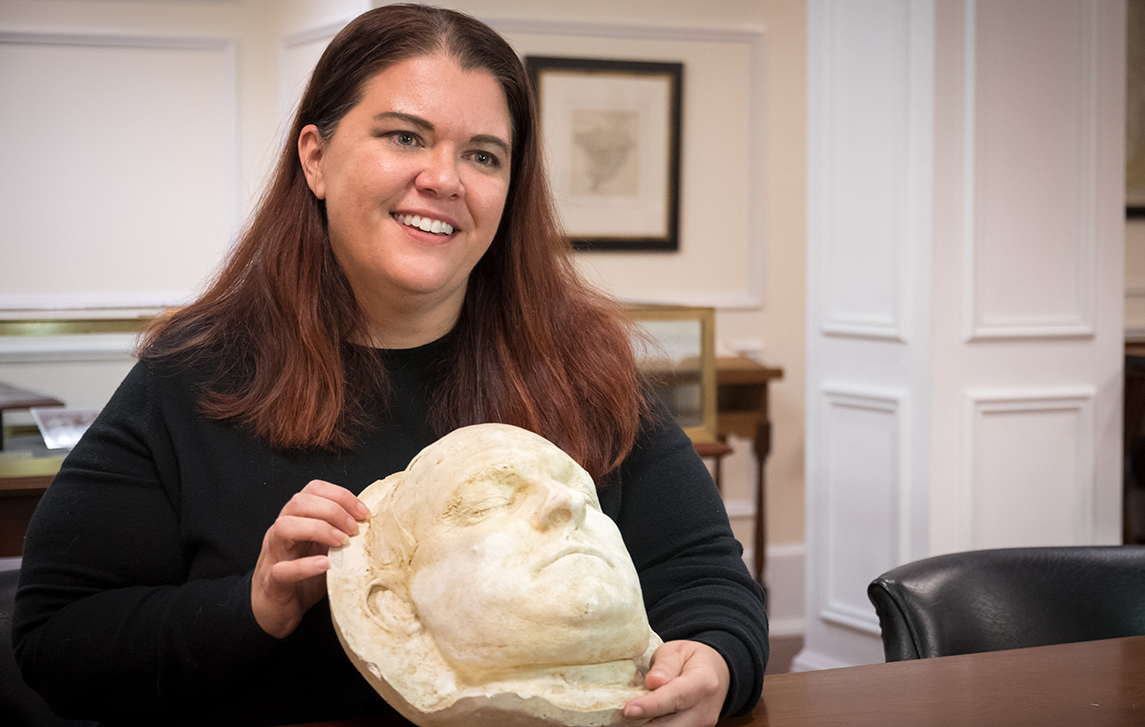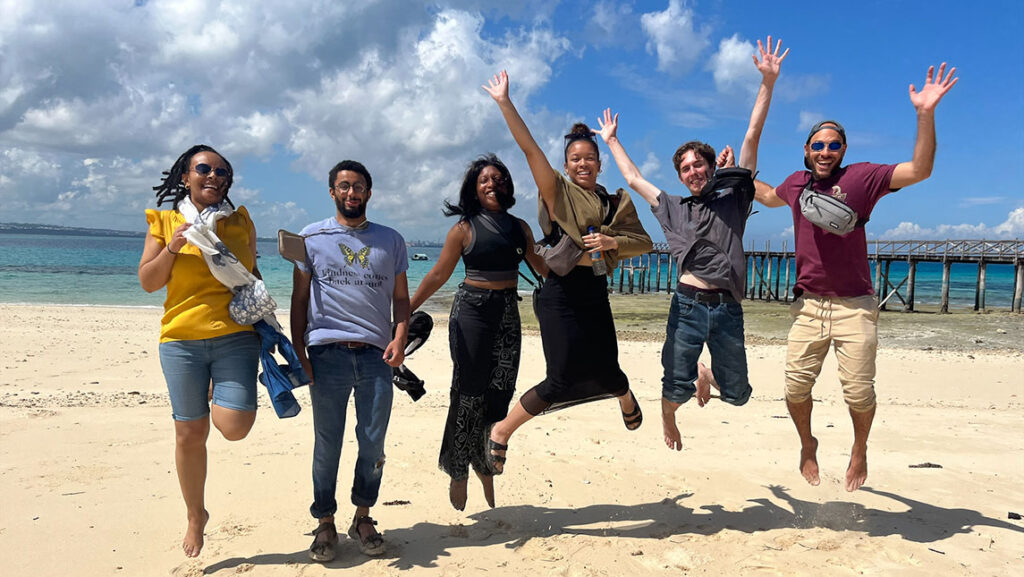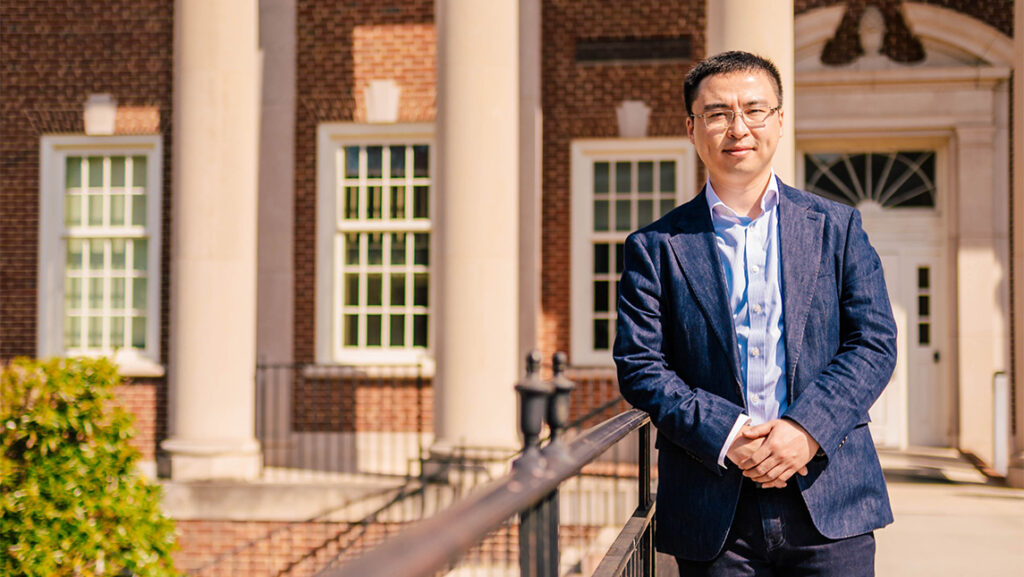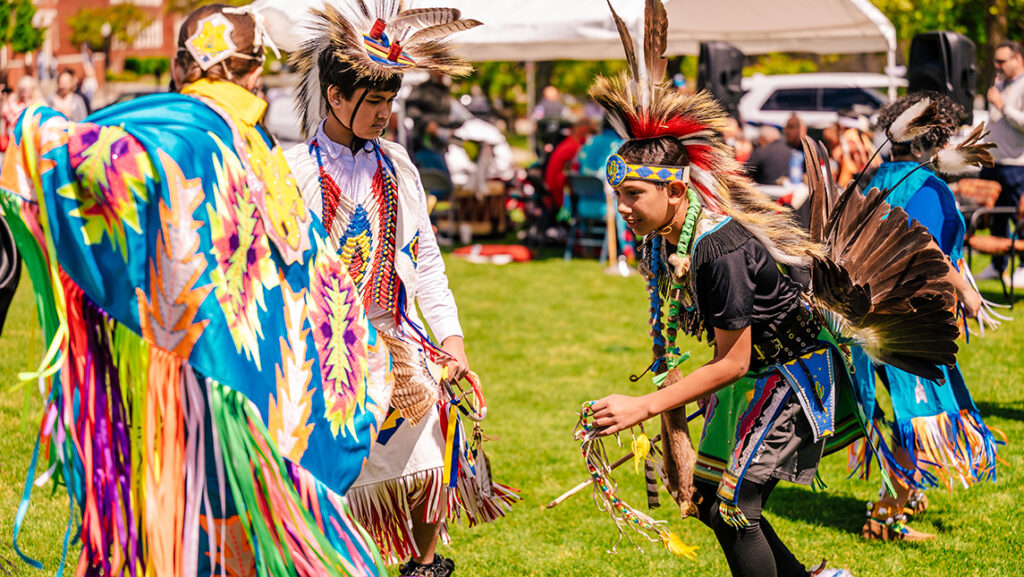The Martha Blakeney Hodges Special Collections and University Archives (SCUA) at UNC Greensboro is celebrating its 50th anniversary this year.
Since 1972, the department has collected, preserved, organized, and made accessible hundreds of thousands of unique or rare materials that document the history of the University and the Piedmont Triad region, as well as the history of women in the United States military, through ten curatorial areas: rare books; cello music; manuscripts; children’s literature collections; university archives; women’s literature collections; photographs, prints, and poster collections; book art and book bindings; artifacts and textiles collections; and the women veterans historical project.
A series of events coincides with the year-long anniversary celebration, including a virtual speaker series on a variety of topics and virtual conversations with the archivists called “First Fridays,” taking place on the first Friday of every month. See the schedule here.
Plus, in honor of 50 years, SCUA staff have hand-picked 50 of their favorite historically-significant documents and objects from their collection, alongside some seldom-seen treasures. Check them out below.
Click on images to enlarge.
Signed letter from Albert Einstein
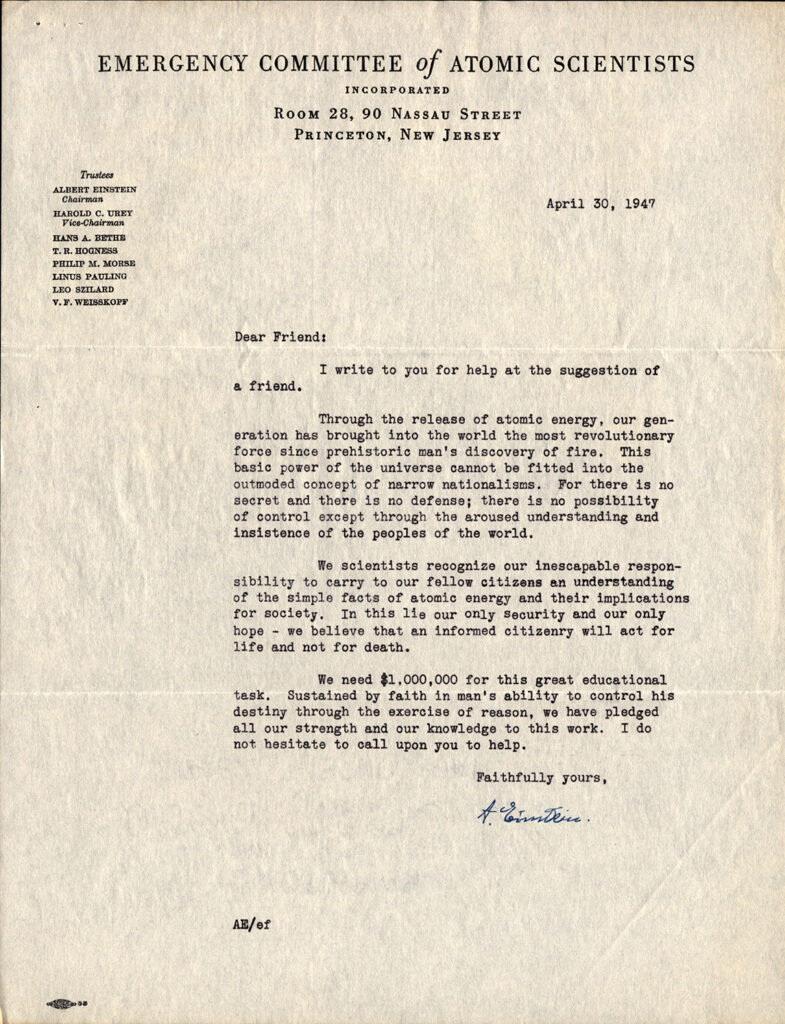
“The name Albert Einstein is synonymous with science and intelligence, and the Archives is lucky to have a signed letter by him to then-president of UNCG, Walter Clinton Jackson. In the 1947 letter, Einstein is urging people to be cautious of atomic energy and his fear that it could be using negatively. He goes on to ask for donations to help support continuous research on atomic energy.”
– Sean Mulligan
“The Art of Practising the Cello” miniature book
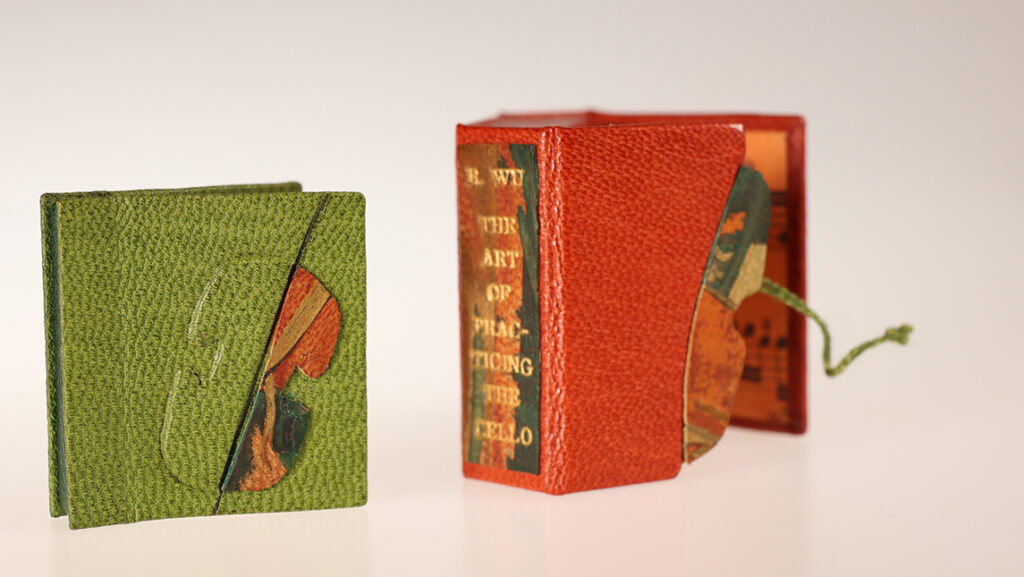
“SCUA has a wonderful collection of miniature books. Among these is this volume, which was printed by Robert Wu and bound in leather by renowned master binder Monique Lallier. Such a beautifully artistic binding in miniature along with a lovely slipcase for the volume makes me marvel.” – Audrey Sage
1935 Red Leather Woman’s College Class Jacket
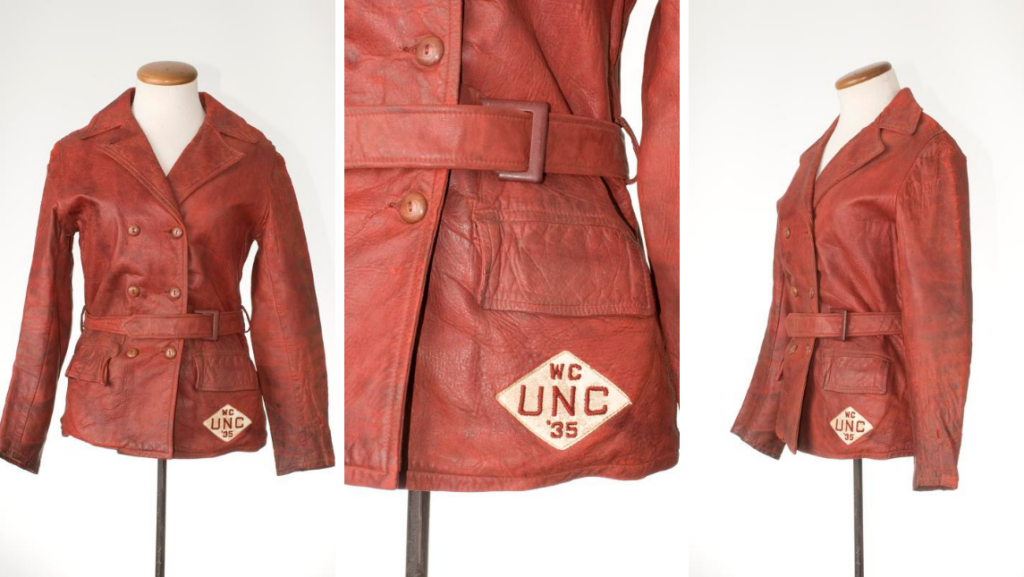
“One of my favorite items in the Martha Blakeney Hodges Special Collections and University Archives is this 1935 class jacket! The oldest class jacket in the University Archives Textile Collection, this double-breasted red leather coat harkens back to a time when UNC Greensboro was known as the Woman’s College. The tradition of campus class jackets made its debut in the late 1920s, reflecting the school’s class colors. Although the four colors were green, red, blue, and lavender, there was never a lavender jacket. Lavender year jackets were replaced with colors that the students felt were more stylish, such as black or charcoal grey. The 1935 ‘Amelia Earhart style’ jacket is not only a favorite of mine, but was so loved by the students that the Athletic Association Counsel chose to wear them for their yearbook photograph – their collars fashionably flipped up, of course!” – Kathelene Smith
“The Complete Poems and Plays, 1909-1950″ by T.S. Eliot
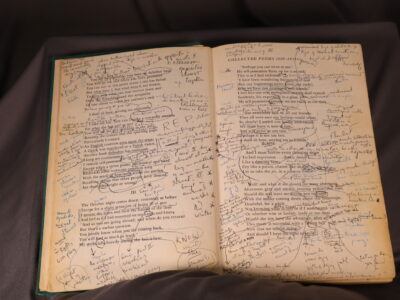
“Randall Jarrell, whose writing career spanned poetry, prose, literary criticism, translation, and teaching, was a member of the Woman’s College English department faculty from 1947 until his death in the fall of 1965, with a few gaps. One of those gaps was to serve as the Poet Laureate in the Library of Congress. Now recognized as one of the two outstanding poet-critics of the 20th century, along with T.S. Eliot, the pages of this volume of Eliot’s poetry is so thickly covered with his annotations that unless you knew the specific poem, you would struggle to read it. The Class of 1969 purchased this book as part of their class gift – they were the last group of students to experience Jarrell’s brilliance as a teacher.” – Carolyn Shankle
Yo-Yo Ma letter in the Janos Scholz Collection
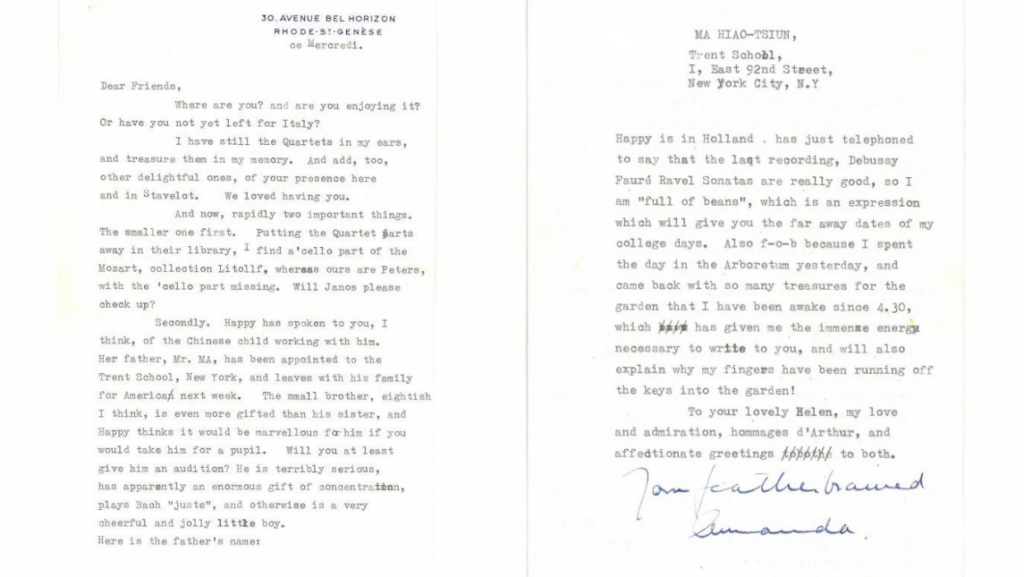
“A lesser-known fact relating to the UNCG Cello Music Collection is that we have the collection of one of Yo-Yo Ma’s first cello instructors, János Scholz. This letter of recommendation is for Scholz to take on Ma as a student. It seems the ‘very cheerful and jolly little boy’ with “an enormous gift of concentration” was playing the Bach Suites ‘juste’ by age eight.” – Stacey Krim
Speech on importance of a Woman’s college, or act of establishment, by Charles Duncan McIver
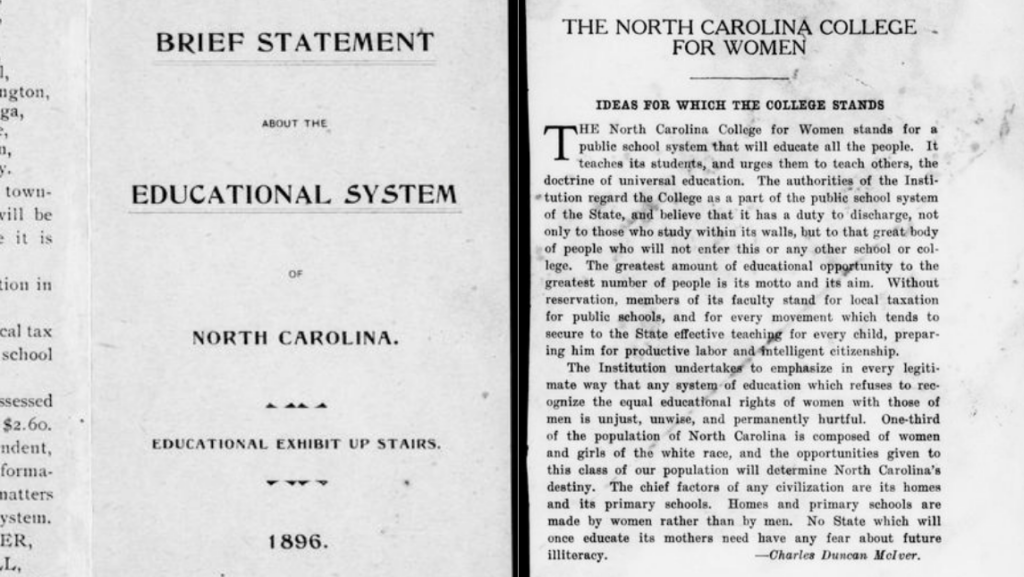
“This article, which appears in several of the NC State Normal and Industrial College (now UNCG) Annual Catalogs, was written by Charles Duncan McIver, first president of the institution. I like this piece because it shows the challenges McIver faced in establishing our university. At this time, the idea of educated women was not a popular one, and of course all of the politicians and voters whom he had to convince were white males. He managed this in part by appealing to reason. In its simplest form, this can be seen in his oft-quoted: ‘Educate a man and you educate an individual; educate a woman and you educate a family.’ That sentiment appears here as well, and it’s a strong justification for the cost of educating women in his time. I also want to point out that the language McIver uses here is inspiring. He talks about the importance of universal education- ‘a public school system that will educate all the people.’ Considering the time period (the school was established in 1891), this is a remarkable statement and a remarkable accomplishment in getting his school for women funded.” – Scott Hinshaw, read it here.
Special orders for German-American relations, 1945
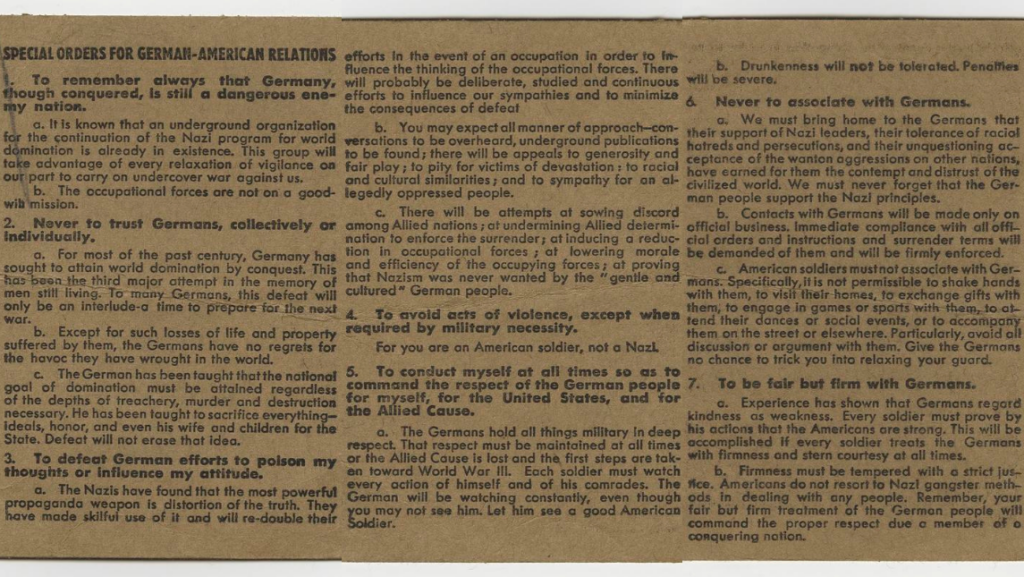
“This little card was issued to American service members who were occupying Germany right after victory. General Jacob Devers asserted that ‘the fight [against Germany] is not over with the laying down of arms.’ The card lists a set of regulations for American service members to follow when interacting with the local populace. Some of the regulations I find notable include Order #2 which states that Germans, ‘collectively or individually,’ should never be trusted because they have no remorse and will inevitably lie to influence ‘our sympathies;’ Order #6 which forbids American soldiers from socializing with Germans (they were even forbidden to shake hands!); and Order #7 which includes the assertions that ‘Germans regard kindness as weakness.’ Within a few months of these general orders, the Cold War heated up and U.S. officials changed tactics, allying our country with Germany, and even bestowing citizenships upon Nazi scientists who would help develop future weapons of war.” – Beth Ann Koelsch
Presidental letters, including signatures
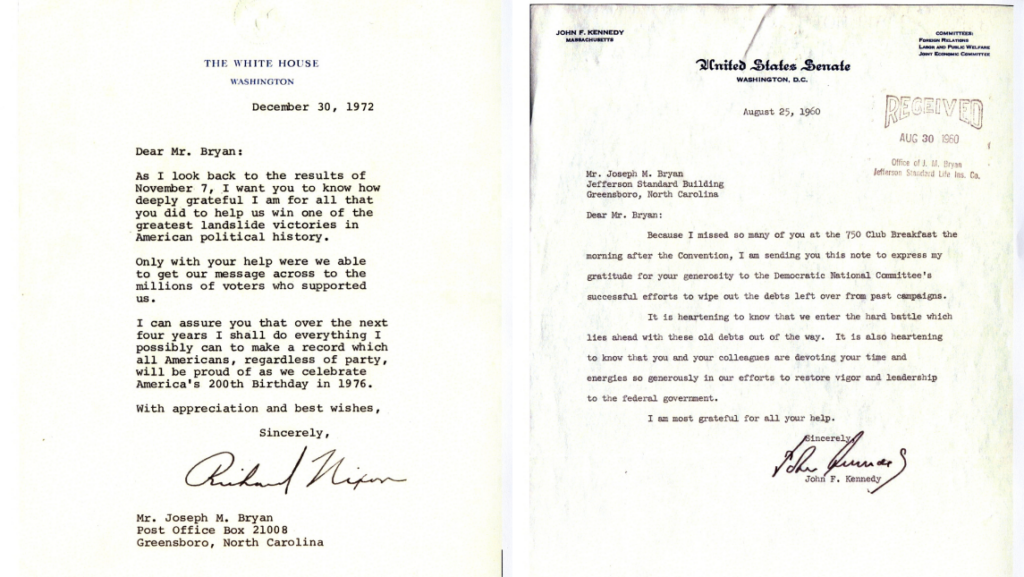
“One area of the Joseph Bryan Collection that I enjoy is his correspondence with various political figures, including U.S. Presidents. There are several signed letters from Richard Nixon, Ronald Reagan, Jimmy Carter, and John F. Kennedy. There is also various memorabilia and documents from the inauguration of John F. Kennedy in 1961.” – Sean Mulligan
Basketball for women : as adopted by the Conference on Physical Training, held in June, 1899, at Springfield, Mass. (1903 edition)
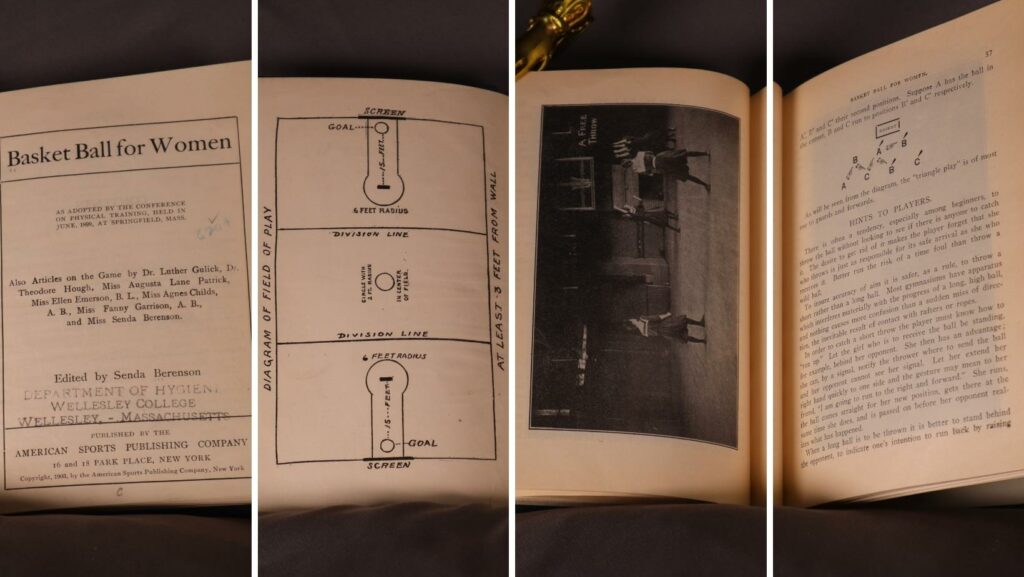
“In 1892, Senda Berenson introduced basketball for women at Smith College. The game featured modified rules, as it was feared that the women could (or should) not physically or mentally handle the strain of the men’s rules. The court was divided into three areas with three players from each time in each area (nine total players per team). The ball moved from section to section by passing or dribbling. Players were limited to three dribbles and could hold the ball for three seconds. No snatching or batting the ball away from a player was allowed. Students at State Normal (now UNCG) quickly gravitated to the game, with the Class of 1900 naming their class basketball team the “Naughty Naughts.” This 1903 version of Berenson’s published rules for women’s basketball can be found in our Rare Books Collection. It explains the rules and provides illustrations to demonstrate many of the newly-introduced basketball techniques.” – Erin Lawrimore
Lois Lenski Collection of Early American Children’s Literature
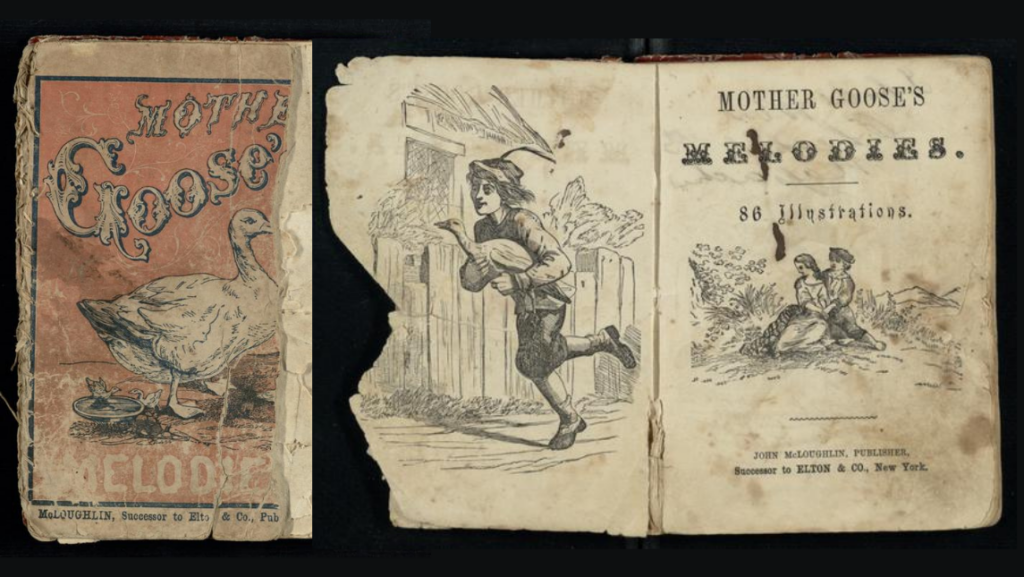
“Lois Lenski is an iconic children’s author. She carefully researched the regions where her stories took place and learned about the people who lived there. She took many photos and made extensive sketches of these places and people for her illustrations. I grew up loving her books. SCUA has Lenski’s collection of Early American Children’s Literature. Within these cabinets are found an astounding number of very small volumes and pamphlets on a variety of subjects. It is amazing to me they have survived. As worn and fragile as some are, I am grateful that Lenski made the effort to preserve what may very well be the only copies of many of the works.” – Audrey Sage, see more here.
Letters from a Civil War solider
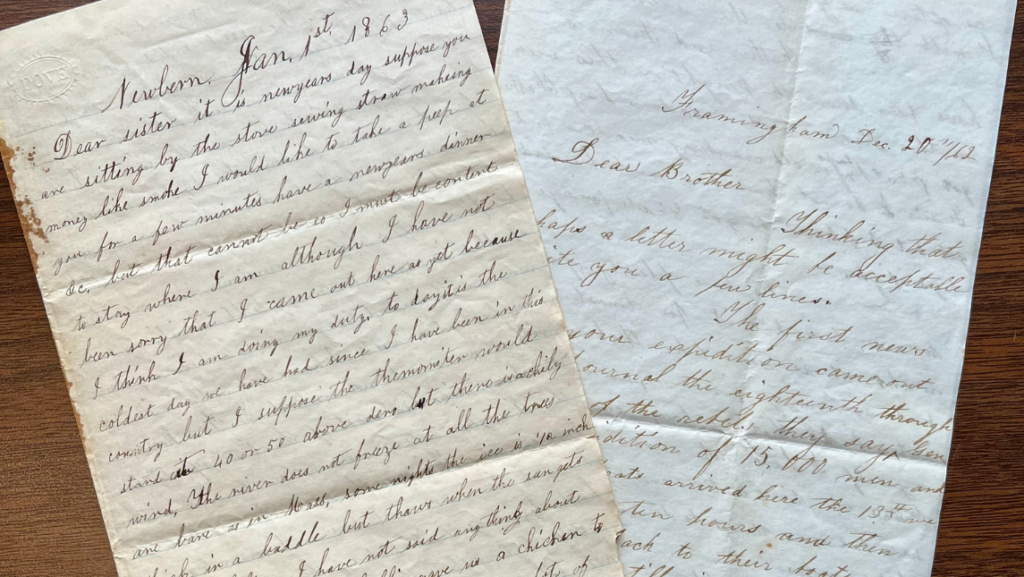
“As an avid Civil War history buff, I was thrilled when we acquired the Davis Hosmer Papers for the Archives. This collection contains roughly 60 pieces of correspondence between 17-year-old Davis Hosmer who served in the Union Army and his family members. The subjects of the letters convey the difficult realties that soldiers and their families faced during the war. There are often references of death, religion, and perceptions of the war, as well as discussions about everyday life in camp and at home. Additionally, this collection contains a diary Davis kept that recounts his daily actions during his service. Tragically, Davis did not live to see the end of the War as he passed away in a New Bern hospital from typhoid fever in February 1863.” – Sean Mulligan
JoAnne Smart Drane’s Smith-Corona Typewriter
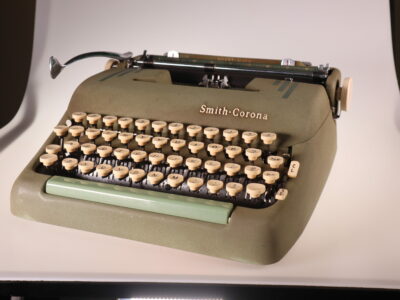
“One of my favorite items in the Martha Blakeney Hodges Special Collections and University Archives is this Smith-Corona typewriter belonging to JoAnne Smart ’60. Smart arrived on campus on September 13, 1956, where she and her roommate, Bettye Tillman, were the first African American students to attend Woman’s College (now UNCG). The typewriter was particularly special to Smart because her father gave it to her before she started her freshman year. It is extremely meaningful to me because she personally gave it to me for our collection. I incorporate the typewriter in many of my class sessions, and I find that it offers a very personal way for students to engage with Smart’s story and the desegregation of our school. The typewriter was recently featured in Greensboro History Museum’s interactive exhibition on vintage typewriters, type-WRITE.” – Kathelene Smith
Set design model, “A Raisin in the Sun,” Triad Stage
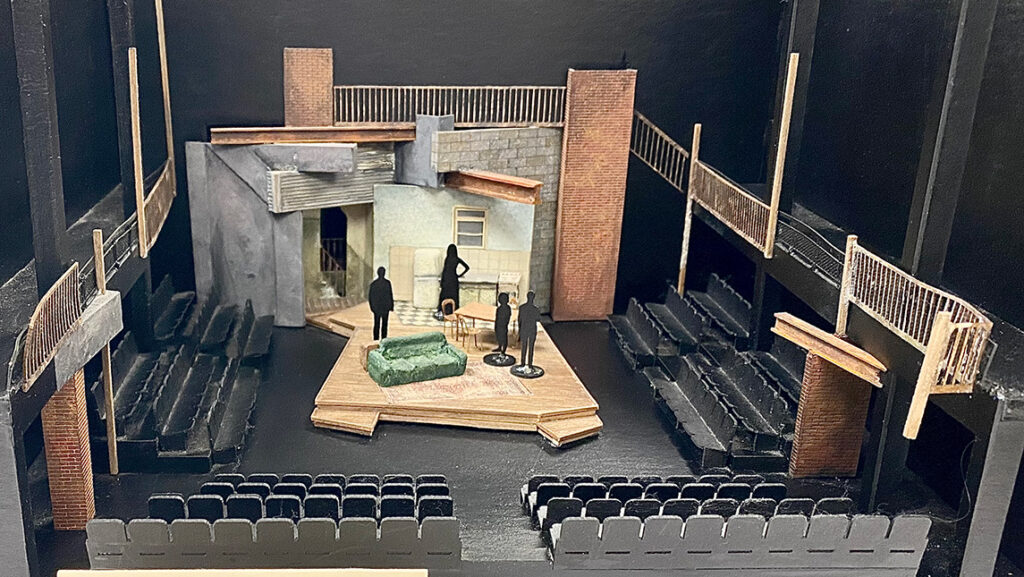
“Triad Stage is a regional theatre that was founded in 1999. The theatre’s grand opening occurred in January 2002, with a production of Tennessee Williams’s Suddenly Last Summer. Triad Stage has put on over 75 productions over the course of its 18 seasons. The theatre company has received accolades on the national, state, and local level. One of the most fascinating aspects of the collection is the set design models, created to visualize how the set (and potentially some costumed actors) would look in the Pyrle Theater. The models date from 2002-2019 and give a first-hand look into how painstakingly each play is brought to life at Triad Stage. The design for 2018’s A Raisin in the Sun is particularly important as SCUA is working to diversify our collections to better reflect African-American, and other underrepresented populations’, history in our collections.” – Patrick Dollar
One of Charles Duncan McIver’s school notebooks, 1880
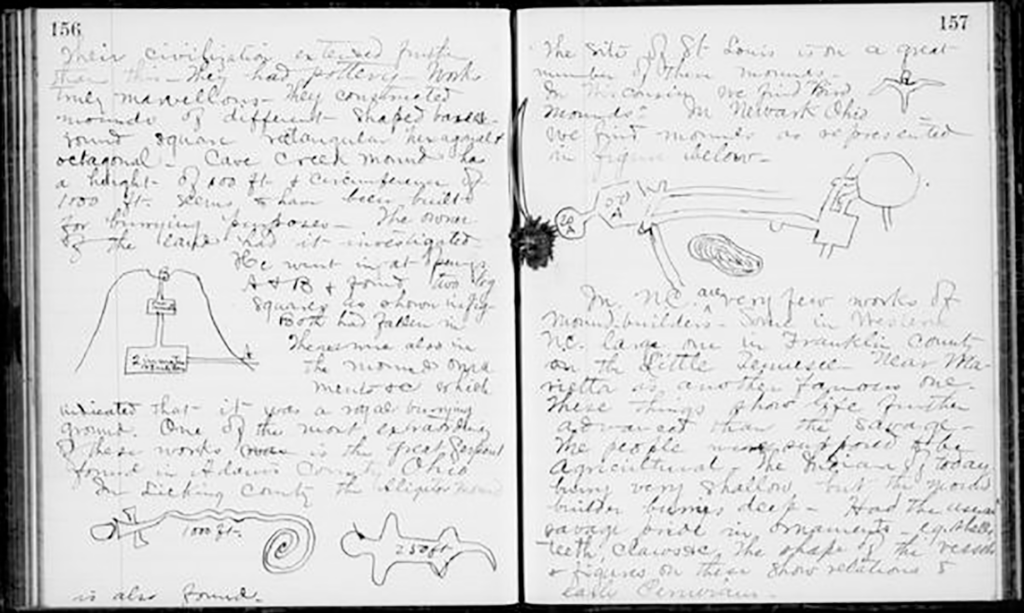
“This 1880 notebook belonged to Charles Duncan McIver, founder and first president of what is now UNCG. This is one of several notebooks we have from McIver’s time at the University of North Carolina, which he attended from 1877-1881. This particular notebook covers classes he took in Political Economy, International Law, and other subjects such as Geology. What I love about these notebooks is that it shows a different version of McIver that we do not often think of – McIver as student. It represents an early period in the beginning of his journey, which of course culminates with his founding of the institution we all know and love as UNCG. I think it makes McIver more relatable to current students to think he was sitting in class at UNC busily taking notes on a lecture, just as students do today! Perhaps another connection with modern students is the fact that McIver had to borrow money to attend UNC; he stated the total cost of attendance was $1,200 – about $33,000 in 2022 dollars.” – Scott Hinshaw
Photograph of Ezekiel Robinson
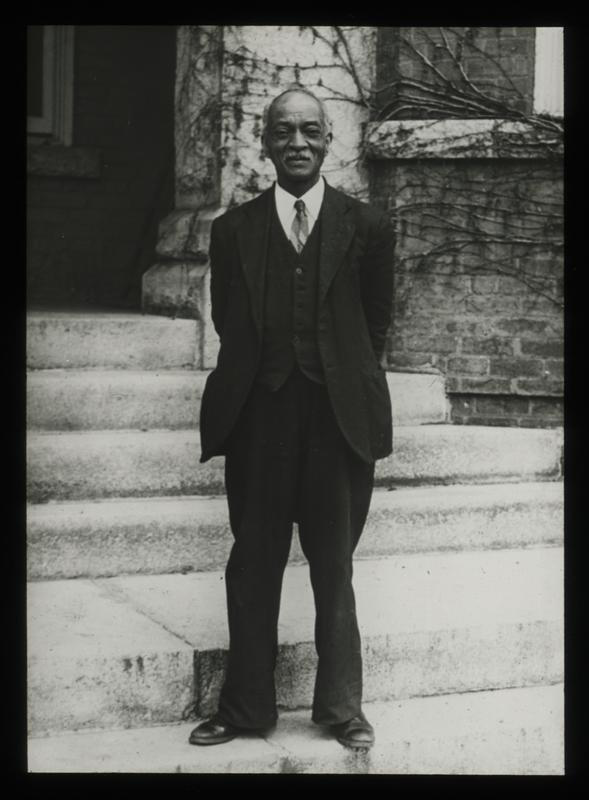
“Ezekiel Robinson was fundamental to the growth and success of UNCG – but he is a man who few people know about. Robinson arrived at State Normal just after its 1892 opening, and he had responsibilities ranging from ringing the school bell to delivering the campus mail to supervising the school’s large (primarily Black) support staff. He worked at the school until 1944 (this photo was taken just prior to his retirement), and saw many changes take place in his 52-year career. He served under three college presidents (McIver, Foust, and Jackson). He saw the acreage of campus increase tenfold and saw the student body grow from 200 to over 2,200. On December 1, 1960, Ezekiel Robinson died at a local nursing home at the age of 93. Robinson was the last surviving member of the faculty and staff from the first year of the State Normal.” – Erin Lawrimore
Alice in Wonderland by Lewis Carroll, 1st edition, 1866
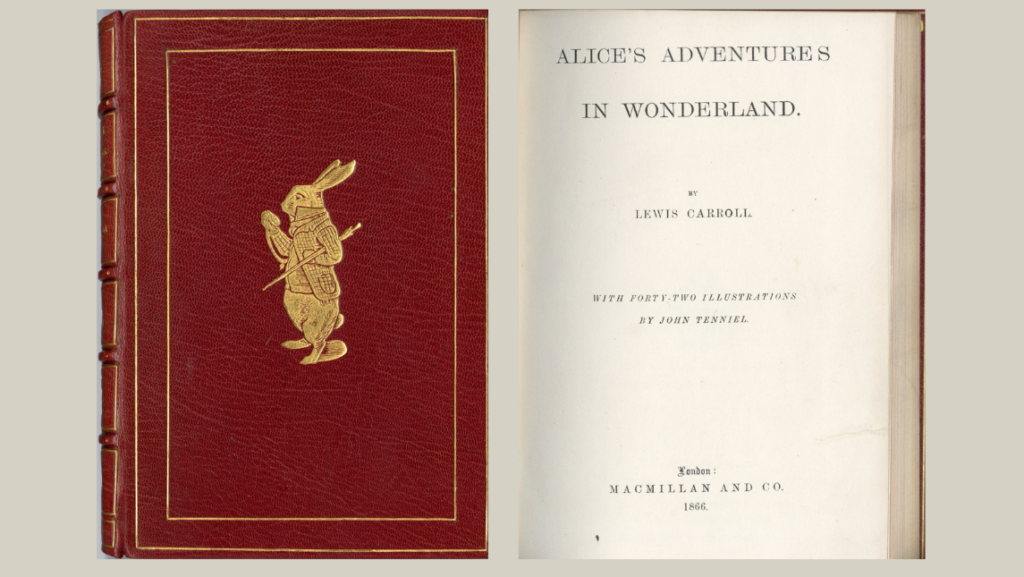
“I have long been a fan of the book Alice in Wonderland for its eccentric and fairytale-like storyline along with its vivid illustrations. There are many memorable scenes, such as the Mad Tea Party and the Queen of Hearts who liked to scream ‘off with her head!’ Additionally, the life of Lewis Carroll and the history of how the book came to be written is intriguing and filled with a hint of controversy. It’s exciting to have the opportunity to see up-close a 1st edition publication of the book dating back to 1866.” – Sean Mulligan
Esther Gilbert’s scrapbook of her time working with the American Red Cross during WWII
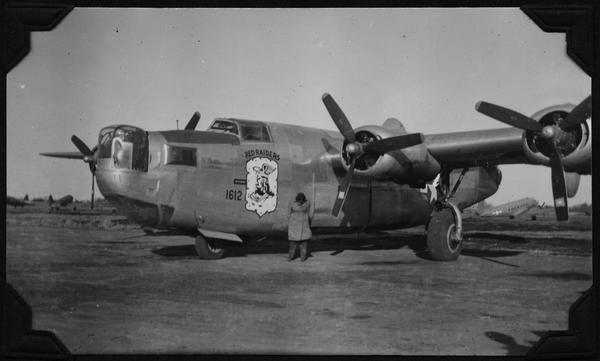
“Esther Gilbert served with the American Red Cross in Australia, The Philippines, and post-war Japan from 1944-1946. Her scrapbook is one of the 70 in the Women Veterans Historical Project Collection, and it is one of my favorites. It is in good physical shape, which is rare because the paper pages of scrapbooks disintegrate over time. Gilbert included photos, maps, and ephemeral materials with descriptive captions for each item. If only all scrapbookers were so considerate of future researchers!” – Beth Ann Koelsch, see more here.
“Jewish Pictures for Orchestra,” composed by Lev Aronson
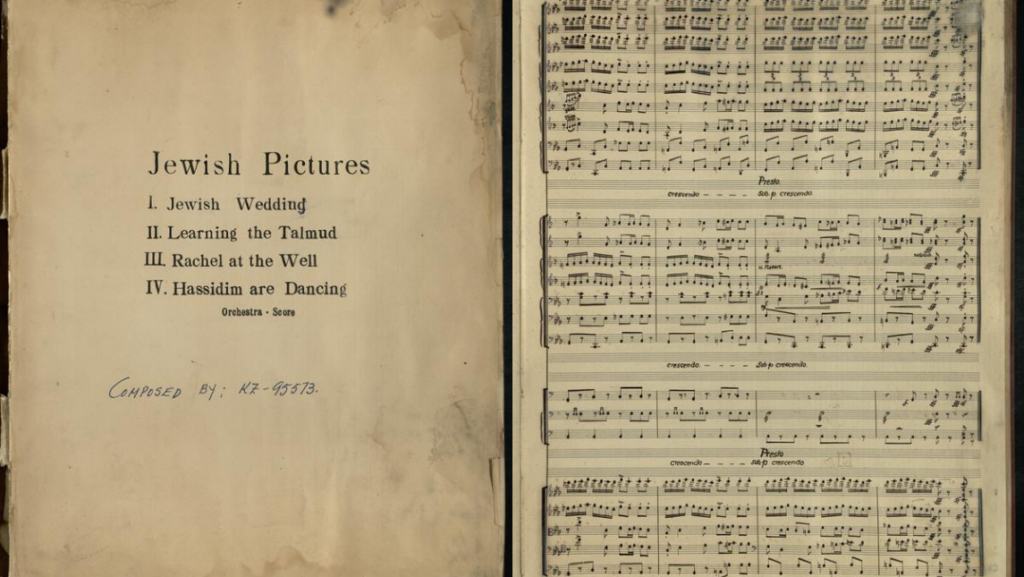
“Jewish Pictures for Orchestra, composed by Holocaust survivor Lev Aronson, and signed KZ-95573, Aronson’s inmate identification number in the Nazi labor camps during World War II. By signing it with his number, Aronson created an object of cultural patrimony for Jewish Shoah identity that has resonated with everyone who has seen it in the collection.” – Stacey Krim
“Votes for Women” Photograph, Harriet Elliot Papers
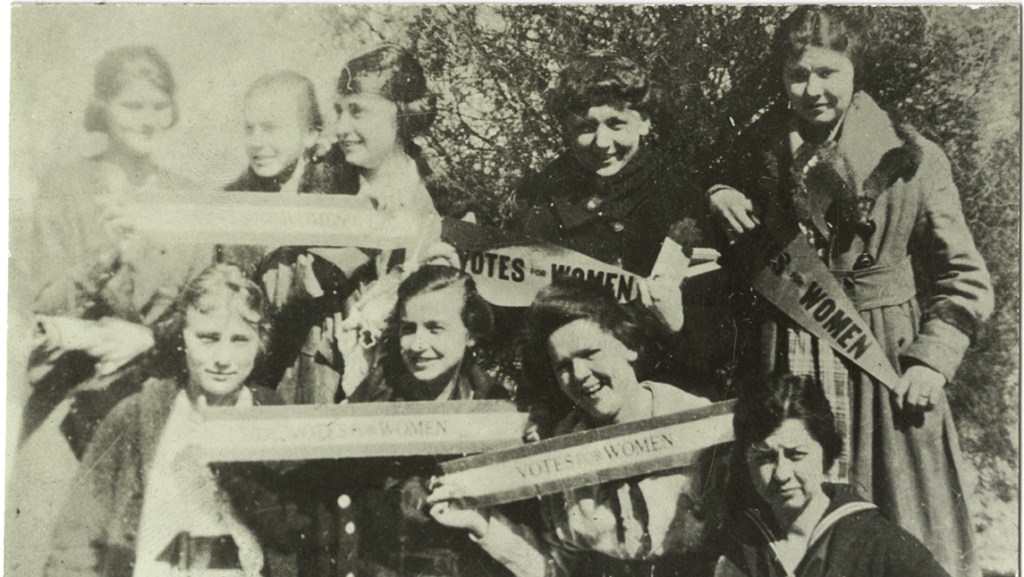
“One of my favorite items is this ‘Votes for Women’ photograph. The suffrage movement on the campus of the State Normal and Industrial College (now UNCG) had its start in the early years of the school’s history, when in 1915, 250 students marched down College Avenue carrying ‘Votes for Women’ banners. The same year, the students formed a suffrage group, which is thought to have been the first of its kind in the South. Professor Harriet Elliott, who is credited with giving the students a fundamental understanding of the political and economic climate of the day, is shown in this photograph with students holding “Votes for Women” banners. Voting equality is a subject that remains relevant, and I continue to return to this image as one of my favorites.” – Kathelene Smith
Wooden Seal of the Woman’s College of the University of North Carolina
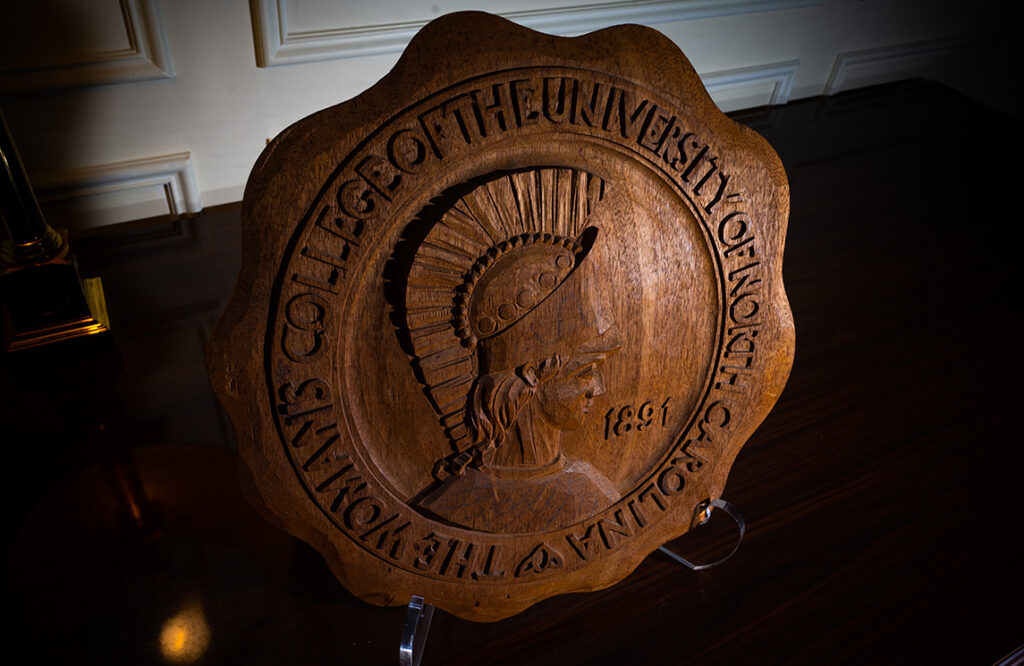
“This Woman’s College of the University of North Carolina seal is my favorite version of the University Seal. Minerva, who has been a symbol of the University from almost the very beginning, is portrayed on this carved wooden seal in a likeness which most closely captures the feel of the ancient era goddess. Although the University seal was made official and standardized in 1963, there were many different versions of Minerva on the University seal in years prior, and not all of them were as beautiful as the “Consolidated-era” seal depicted here.” – Scott Hinshaw
Joseph Bryan’s Masters Tournament Green Jacket
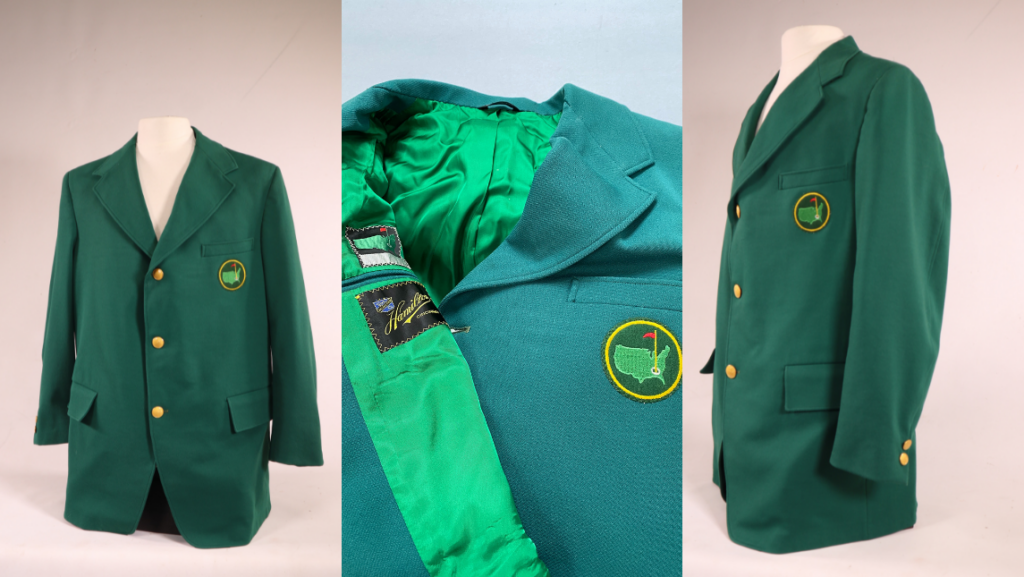
“Masters Tournament Green Jackets are an iconic piece of golf history. Joseph Bryan’s green jacket is a rare treasure for the Archives since the August National Golf Club forbids the removal of the jackets from the grounds. However, Mr. Bryan was a founding member of the club back in 1933, and thus allowed special privileges.” – Sean Mulligan
WWII Dead Reckoning Computer, 1944

“I’m in awe of the Women Air Force Service Pilots (WASPs) of World War II. These women, who had to already be licensed pilots before even trying out for the WASPs, flew all types of aircraft. This ‘dead reckoning computer’ has a very cool name but is essentially a slide rule that pilots use to calculate altitude and air speed. I just can’t imagine performing mathematical calculations at the same time I’m trying to control a tiny open cockpit of a PT-19 trainer, B-24 bomber, or, to be honest, any plane.”
– Beth Ann Koelsch
1962 Pine Needles photo of the Faculty Dog Show
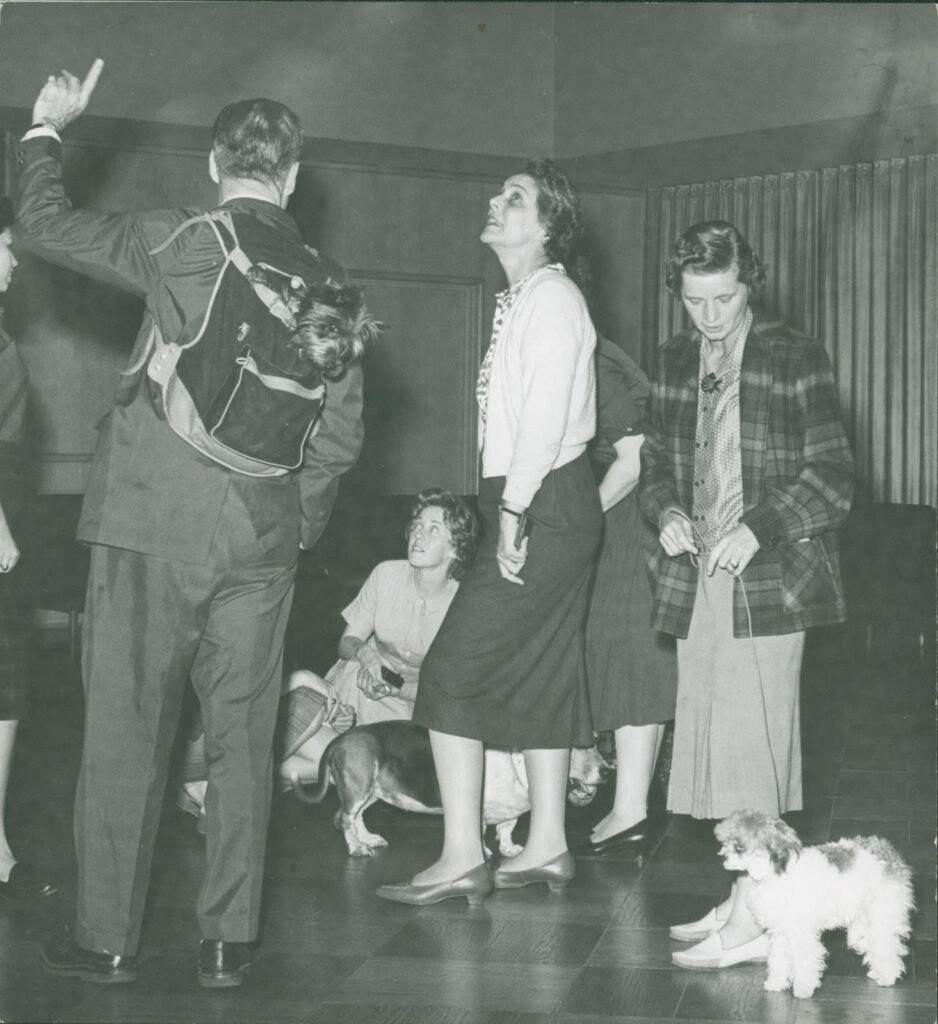
“A gem from the 1962 Pine Needles (University yearbook) is this photo from the Faculty Dog Show, which was held as part of the WC Service League’s Purse Drive fundraising campaign. Typically, the dog show was held in the Elliott Hall ballroom, and it concluded the week-long charity effort. This photo features professors Richard Bardolph (History and Political Science), Katherine Taylor (Dean of Students), and Ellen Griffin (Physical Education) alongside their dogs.”
– Erin Lawrimore
Wedding Yarmulke
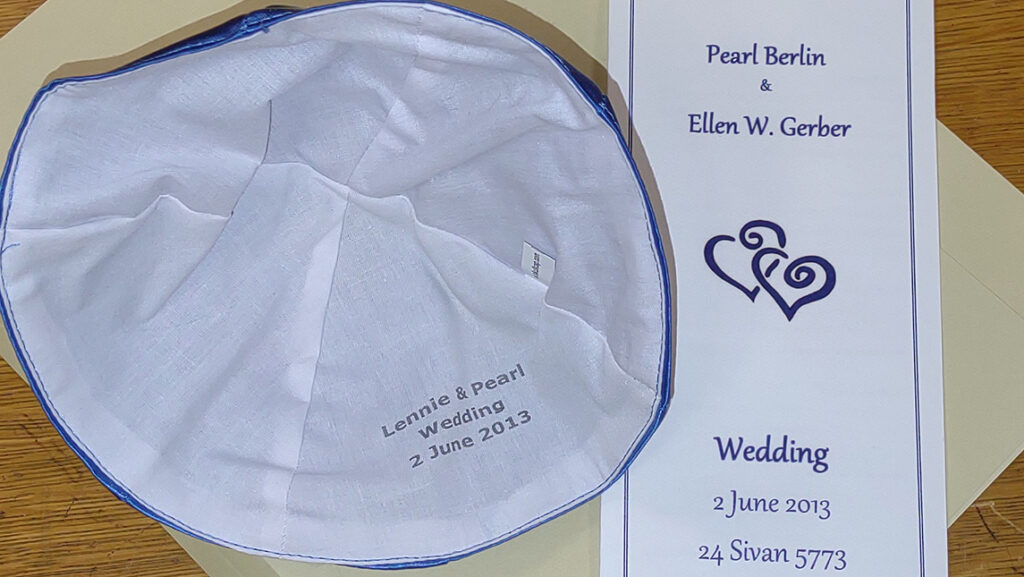
“Ellen (Lennie) W. Gerber and Pearl Berlin were local icons in the fight for equal marriage rights for LGBTQ+ people. This yarmulke was a gift handed out at their wedding, the first same-sex wedding performed at Beth David Synagogue in Greensboro back in 2013.” – Stacey Krim
“A Ford Car and $350 Will Form a Truck” photograph ca. 1917
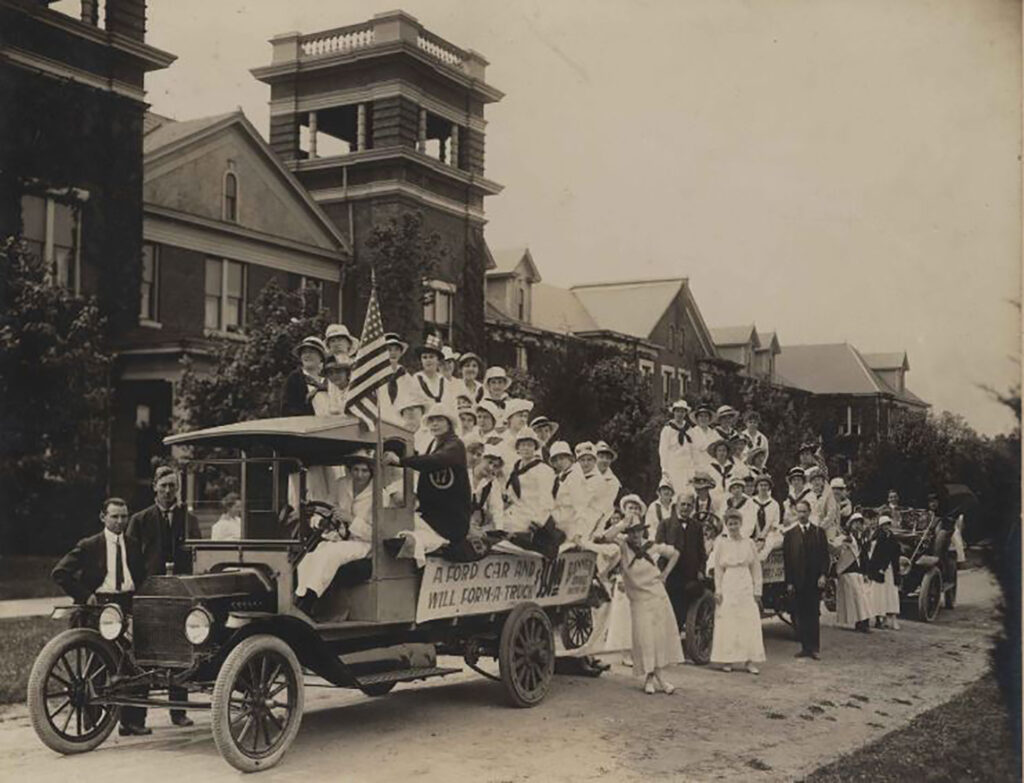
“One of my favorite items is this “A Ford Car and $350 Will Form a Truck” photograph. This image, part of the Historical Print Photograph Collection, shows students in front of Spencer Residence Hall preparing to travel to Guilford Courthouse National Military Park for a July 4th event. The image is thought to be dated about 1917, so it would have been taken just a few months after the Park was established. This may have been part of a fundraising effort by State Normal and Industrial College (now UNCG) students to support the homefront mobilization during World War I. In this case, they hoped to collect funds for a military truck, which could be created by acquiring a Ford car and $350! I love this photo for so many reasons – from the class sweater worn by the student in the first truck, to the enthusiastic female-driven car parade. It is a time capsule of the Woman’s College on that day in 1917!” –Kathelene Smith
Spring Garden Press
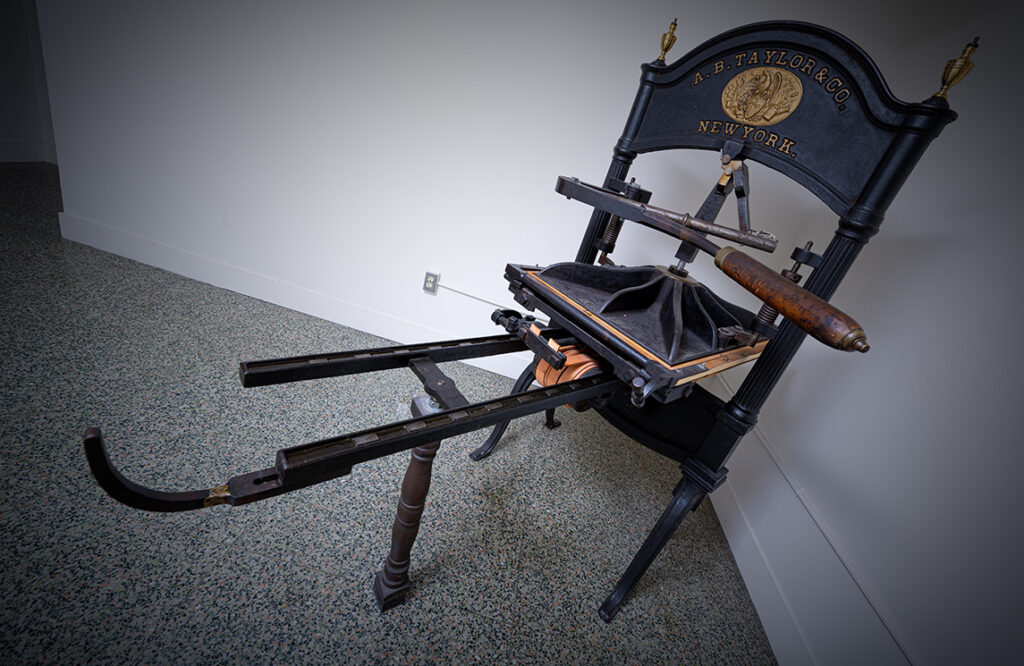
“Spring Garden Press has been the imprint of the library’s A.B. Taylor Company No. 2 Iron Hand Press housed in Special Collections and University Archives since becoming operational in the 1970s. Over the last several decades, the press has been used primarily by library staff for class demonstrations or to print small editioned items, such as bookplates and broadsides.” – Suzanne Sawyer
“Turkey Trot” by Lois Morrison
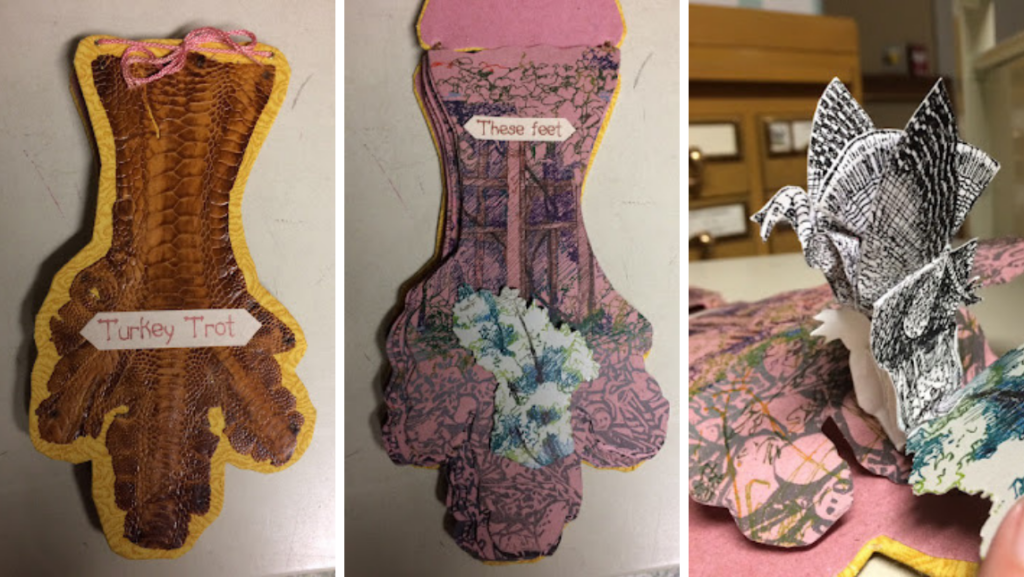
“I love this unique limited edition work by Lois Morrison, which was purchased for our Artist Book Collection. She is a special artist who has created a wide variety of pieces of such astounding creativity and whimsical vision. This book was bound using the skins from turkey feet she found at a market in Mexico. It has delightful color pencil drawings and moveable parts with dialogue that is spoken with the tune “These Boots are Made for Walking” in mind. It is a book that always brings a smile to my face.” – Audrey Sage
Mary Lewis Harris Diploma
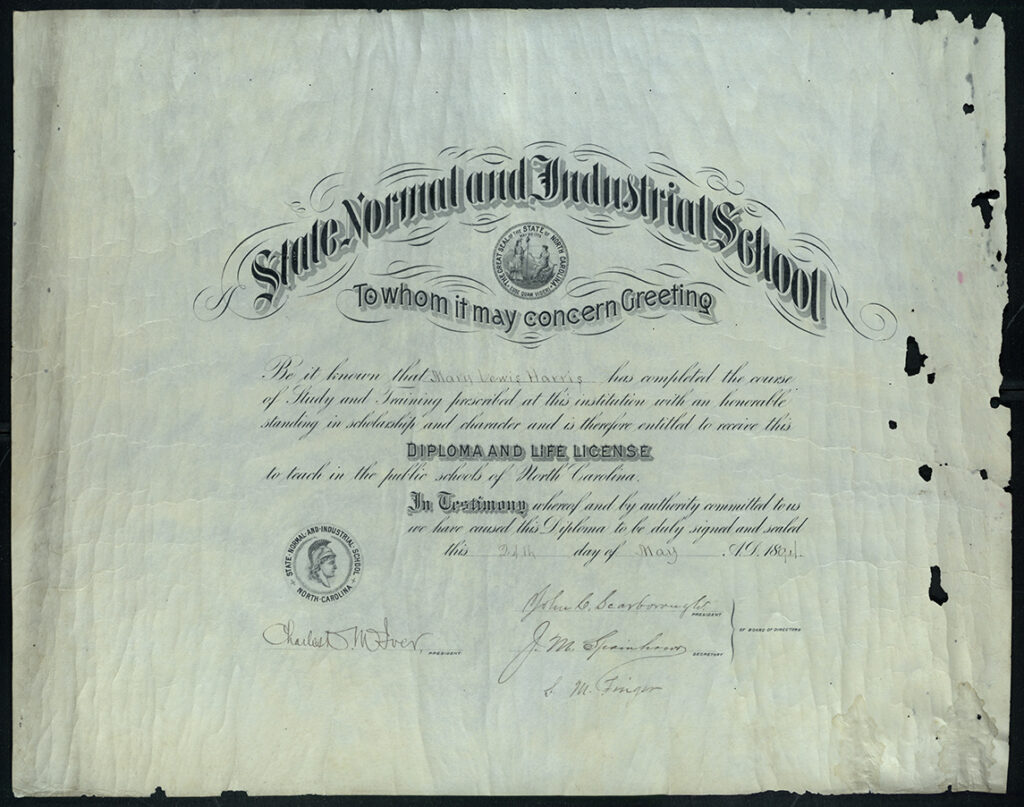
“Mary Lewis Harris’ diploma is one of the earliest surviving documents we have with the UNCG (then State Normal and Industrial School) seal affixed to it. This “Diploma and Life License to Teach in the Public Schools” (as stated on the diploma) is signed by Charles Duncan McIver directly under the university seal. To me, this represents the goal that McIver had in mind when he first championed education for women in North Carolina: a school that could educate the women of North Carolina who would then, in turn, teach the people of North Carolina. Or, as he put it, ‘Educate a man, and you educate an individual; educate a woman and you educate a family.’ The diploma also represents the first extant appearance of Minerva in association with what is now UNCG.” – Scott Hinshaw
“Death to the Klan” Poster
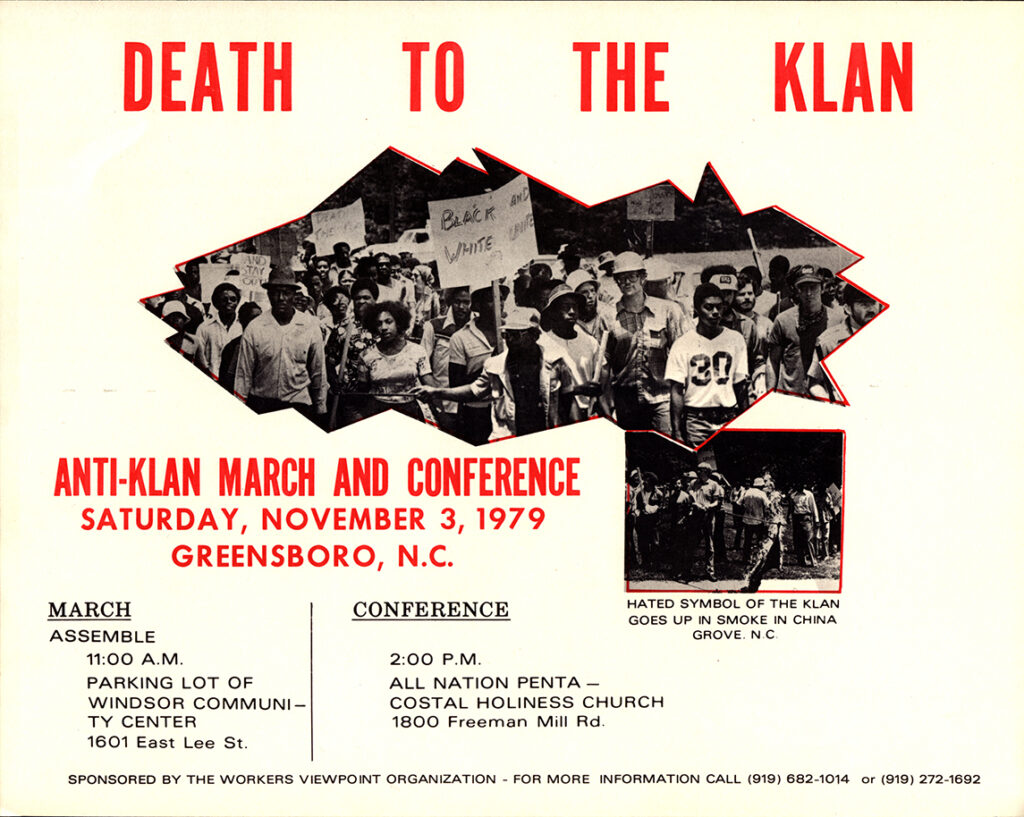
“The Greensboro Massacre was a historic event for Greensboro in terms of race relations and workers’ rights. This poster foreshadowed the day five people were killed by Neo-Nazis and the KKK.”
– Stacey Krim
“The Lost Fisherman: A Child’s Story” by Morris Cox
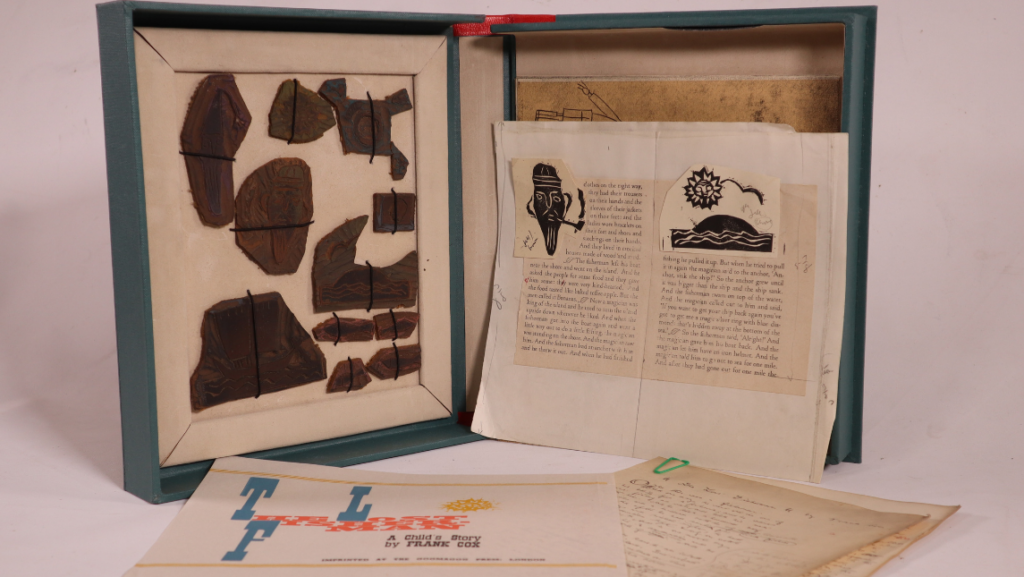
“Morris Cox is difficult to define. During his lifetime, he was a graphic artist, sculptor, puppeteer, painter, poet, printmaker, and book artist. By the time The Lost Fisherman: A Child’s Story was printed in 1963, Morris Cox was 60 years old and had kept his younger brother Frank Cox’s original drawings, manuscript as dictated to Morris, and linocuts through the chaos of two world wars and multiple house moves, all within London. We have those original materials that Morris so carefully stored, ‘hallowed by time,’ in his words. We also have a copy of the finished book; Morris having brought then six-years-old Frank’s vision to life. What a testament to love for your sibling, for a bright memory of your childhood, and hope.” – Carolyn Shankle
“Somebody Special”
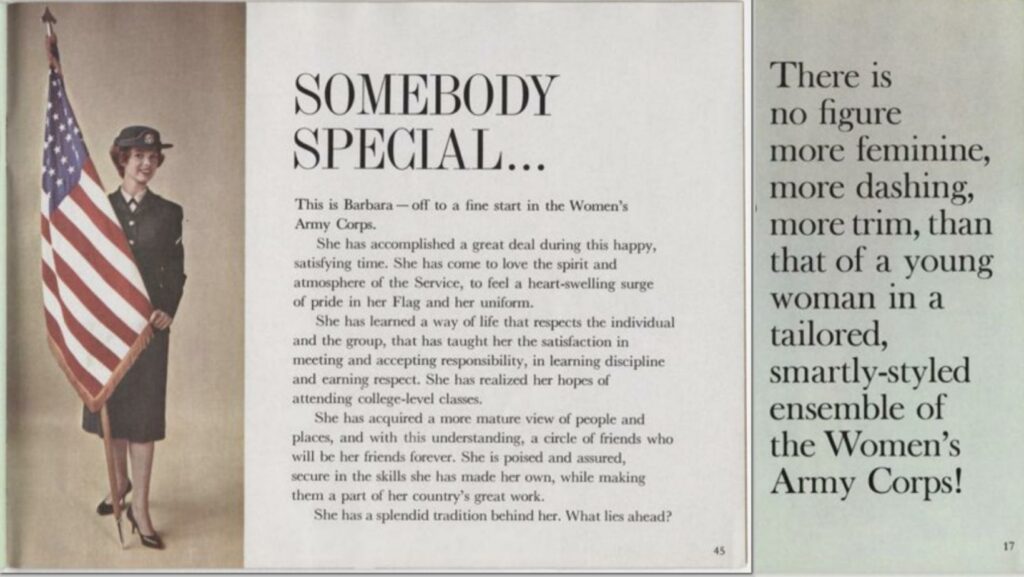
“Oh, Barbara! Gender roles and rules change over time. During World War II, the government and media propaganda machines encouraged American middle-class women to take on responsibilities that had been considered the domain of men. After the war ended, the message pivoted 180 degrees and women were told to go home, make babies, and take care of the household. Between WWII and the second wave feminist movement of the 1970s, military recruiting materials carefully tried to argue that military service was compatible with traditional femininity. This booklet is the story of Barbara, who enlisted in the Women’s Army Corps and discovered a world of ladylike glamor. You can almost smell the gender anxiety coming off of the pages.” – Beth Ann Koelsch, see more here.
“The Carolina Housewife” by Sarah Rutledge, 1851
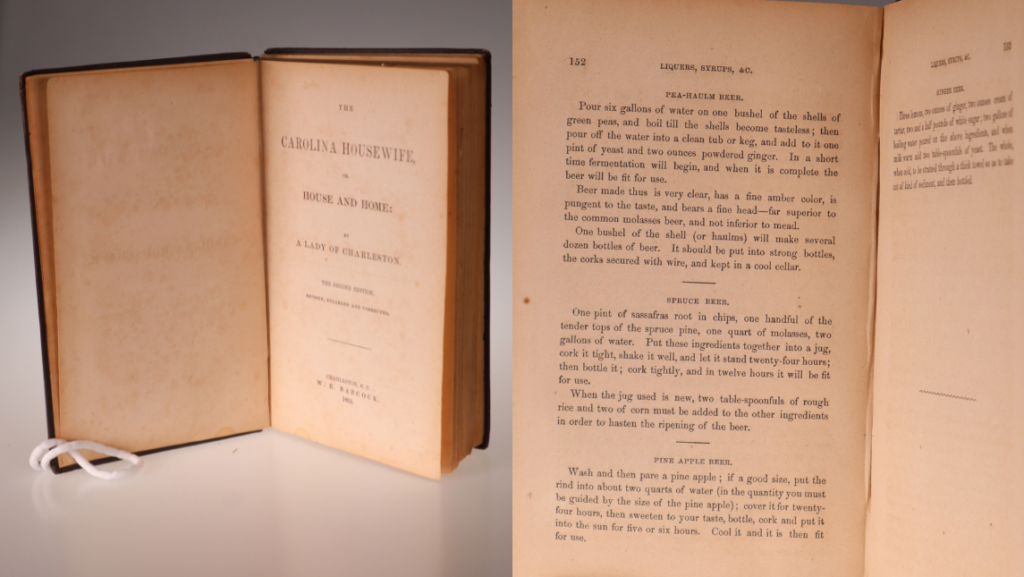
“While locally-produced and locally-sourced beers are now quite common throughout North Carolina, few people think about the roots of these regional delicacies. Women were often the primary brewers in the pre-industrial era, with most beer being made and consumed in homes. The 1851 edition of The Carolina Housewife, written by Sarah Rutledge and published in Charleston, SC, features a number of beer recipes that women could make for their household. Note that, unlike modern craft beers, this recipe does not include hops, which would have been difficult to come by in South Carolina as their warm climate does not really lend itself to hops production.” – Erin Lawrimore, see more here.
Oversized pencil of Congressman J. Howard Coble
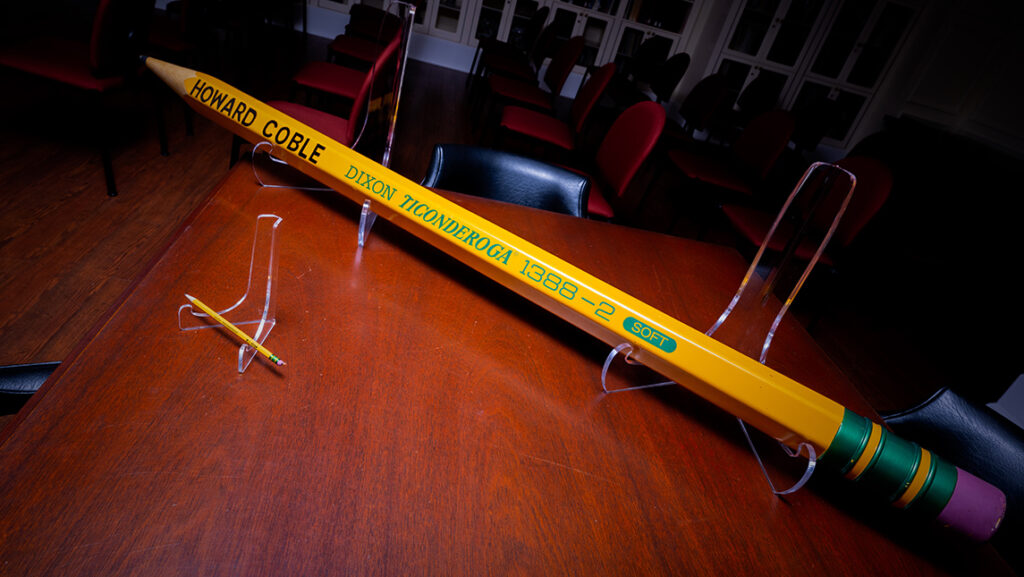
“Congressman J. Howard Coble served as North Carolina’s representative in the U.S. House of Representatives for 30 years (1985-2015). Coble was known for his work on copyright law, as a member of the Committee on the Judiciary and the Committee on Transportation and Infrastructure, and, later, for his stylish madras jackets. Coble’s personal papers offer an amazing look into the politics of the state and the nation over the course of 30 years – illustrating dramatic changes, but also a consistent thread of concerns. I selected this unusual item because it illustrated Coble’s most consistent campaign imagery of the ‘sharp pencil’ used to slim down government spending. Coble’s collection joins other political collections in SCUA to highlight social and political issues, and the governance that impacts us all on a daily basis.” – Patrick Dollar
Henry Warren Manning drawings/plans for State Normal and Industrial College, 1909
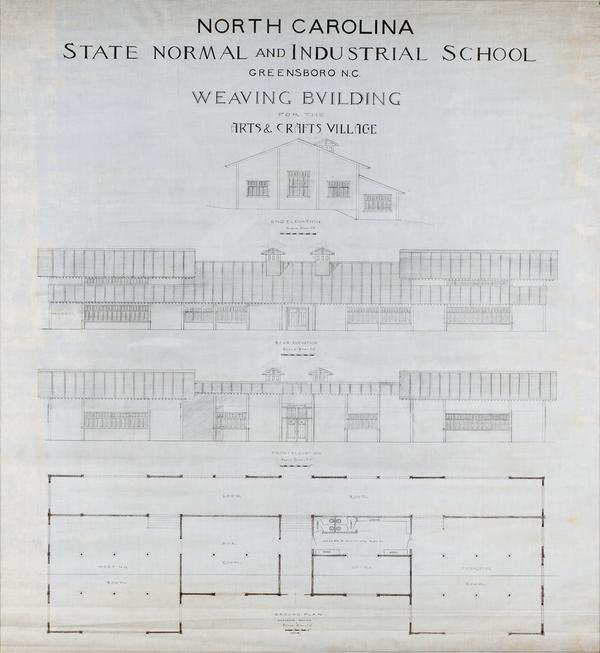
“From 1901-1921, Henry Warren Manning communicated, consulted, and planned the layout and buildings for State Normal and Industrial College (now UNCG). Manning, who had worked with Frederick Law Olmstead of Central Park fame, was made the official landscape architect of the College in 1909. His general plan, dated from 1909, shows the immense influence Manning had on the look and feel of our University. It was his idea to focus the grounds around College Avenue, to create a grand boulevard stretching from the train tracks in the south towards Peabody Park in the north. A building boom in the 1920s reinforced the centrality and focus of College Avenue as the new structures faced the boulevard. An interesting side note to this is that a State Normal alumna, Kittie Dorcas Dees, who worked for Manning, persuaded him to do the planning work for the school. She was also involved in some of the survey work herself!” – Scott Hinshaw, see more here.
“Susannah” piano/voice score
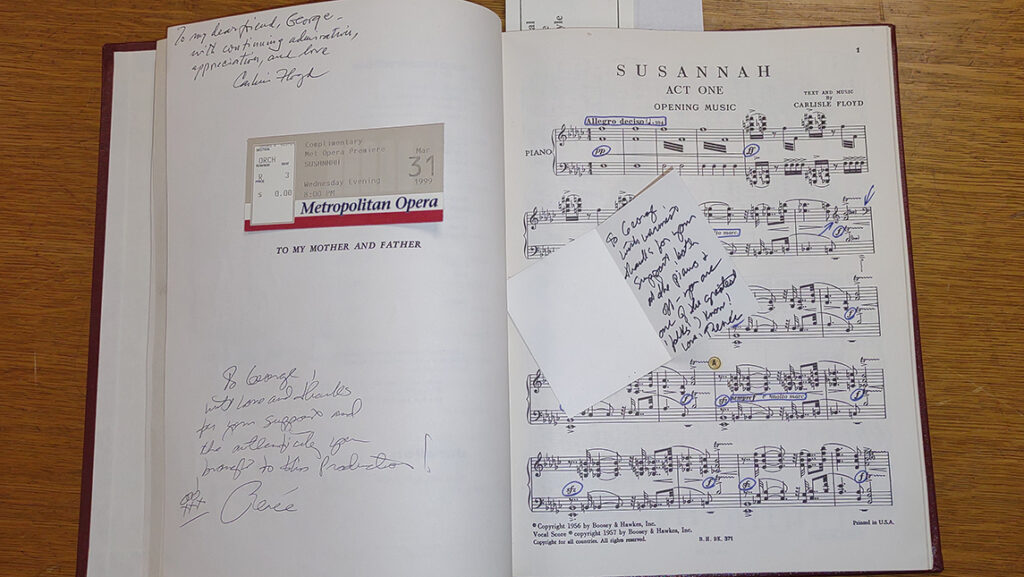
“This is the annotated performance copy of Susannah used by George Darden, former piano accompanist and assistant conductor for the Metropolitan Opera for Renee Fleming’s performance in 1999.”
– Stacey Krim
Dr. Margaret Jorgensen Dick’s collection
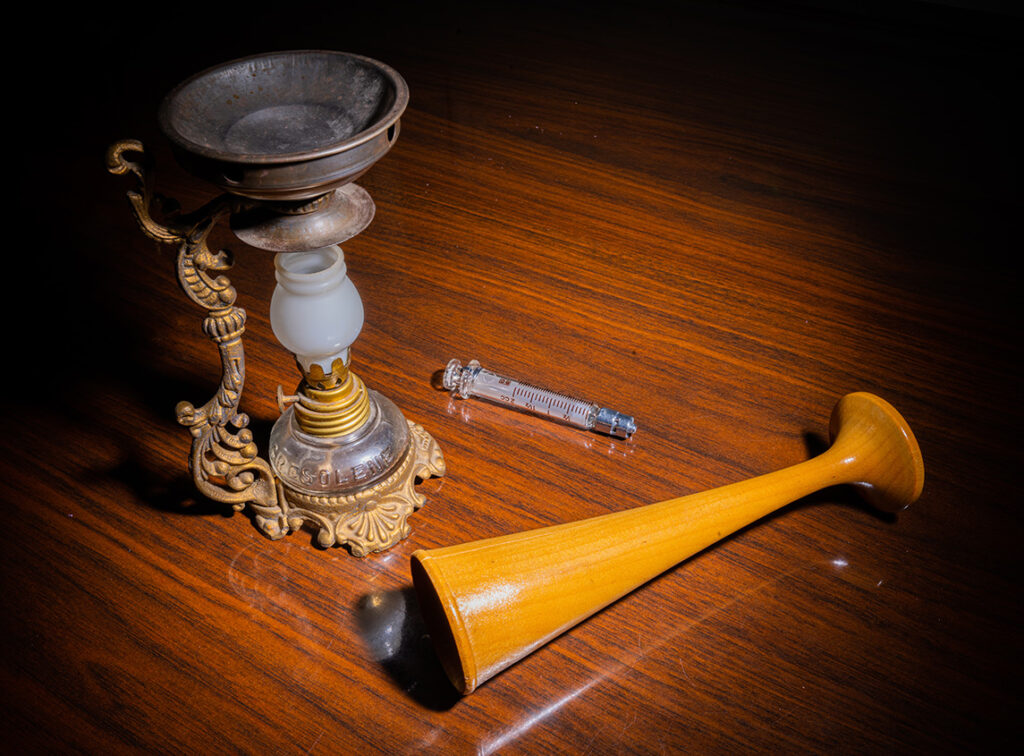
“Dr. Margaret Jorgensen Dick, RN, PhD, was an Assistant Professor of Nursing at UNCG. This collection contains three medical tools, including a glass syringe like the ones used for polio vaccines in the 1940s and 1950s, a Vapo-Cresolene vaporizer (circa 1800s), and a Pinard horn (circa 1800s).” – Suzanne Sawyer
Khaki World War I military uniform made by Abercrombie & Fitch and worn by Dr. Anna Gove
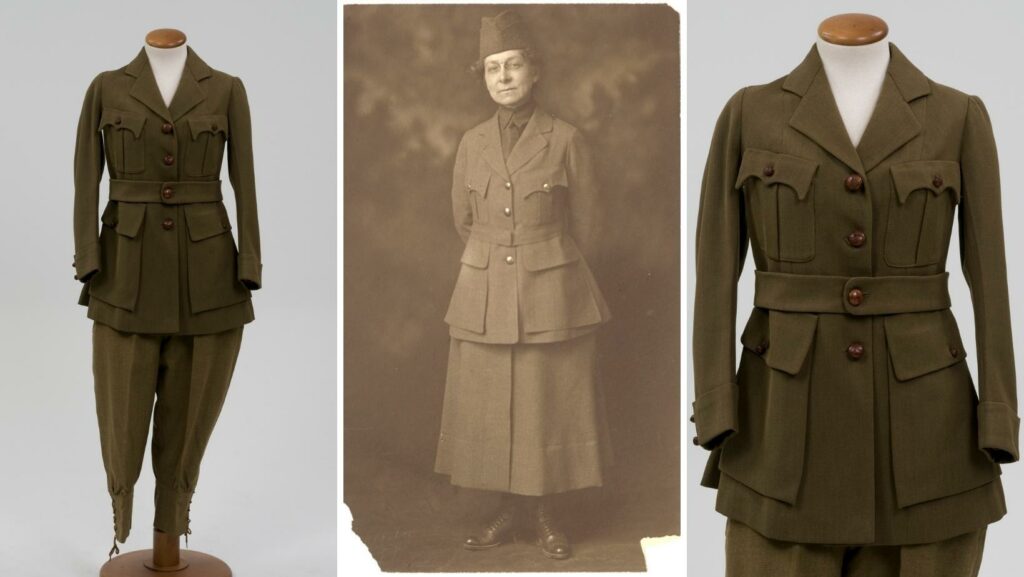
“One of my favorite items is this Khaki World War I military uniform worn by early college physician, Dr. Anna Gove. When the United States declared war on Germany in April of 1917, Gove was in her 50s. Instead of safely staying on campus to help mobilize the homefront, she decided to travel to France to serve with the Red Cross for the duration of the War. This uniform, made by early outfitter Abercrombie & Fitch, is one of the several pieces we have belonging to her in our University Textile Collection. She was quite a “clothes horse,” so she ordered a variety of uniforms, including a plaid-lined trench coat, hats, scarves, gloves, etc. Not only was Dr. Gove an amazing physician, but she was also an amateur photographer, and we have many images of her wartime experiences in our Collections. Perhaps it is the corresponding images that make the uniforms and related pieces so powerful. Dr. Gove may have been short in stature, but she was fierce in her beliefs and her dedication to her profession. After the war ended, she returned to the North Carolina College for Women (now UNCG) as the campus physician until her retirement in 1937.” – Kathelene Smith
“The Secret of the Old Clock” of the Nancy Drew Mystery Stories, 1st edition, 1930
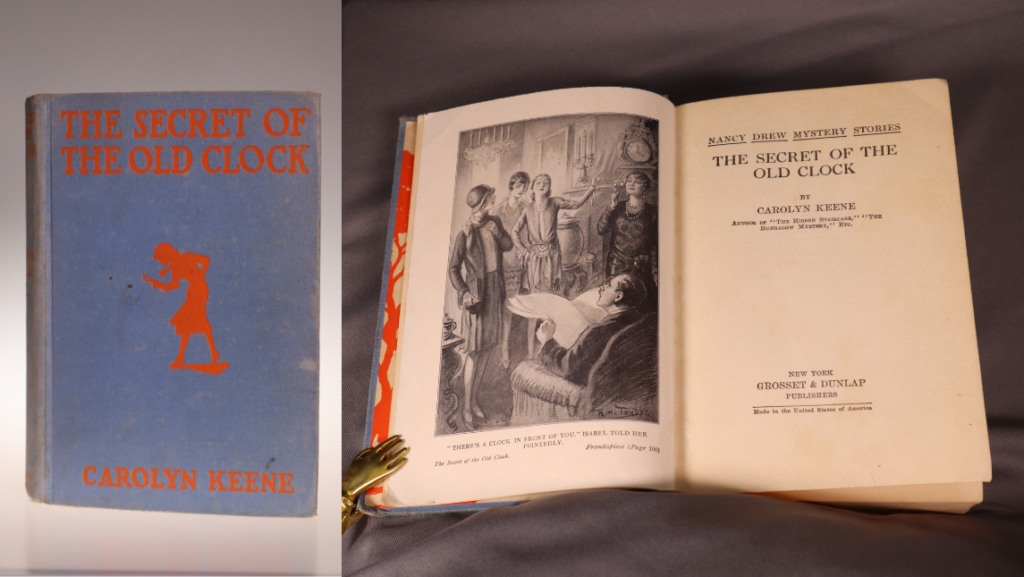
“The Girls’ Books in Series is one of my favorite collections in SCUA. I have read so many of these series and among my favorite is the Nancy Drew Mystery Stories. My mother had a collection of the original publications from the 1930s and I loved looking at the illustrations and reading about the adventures of Nancy, George, and Bess, three intelligent independent women, whose curiosity and sense of justice led them to many discoveries.” – Audrey Sage
Handrawn poster for “Mame”
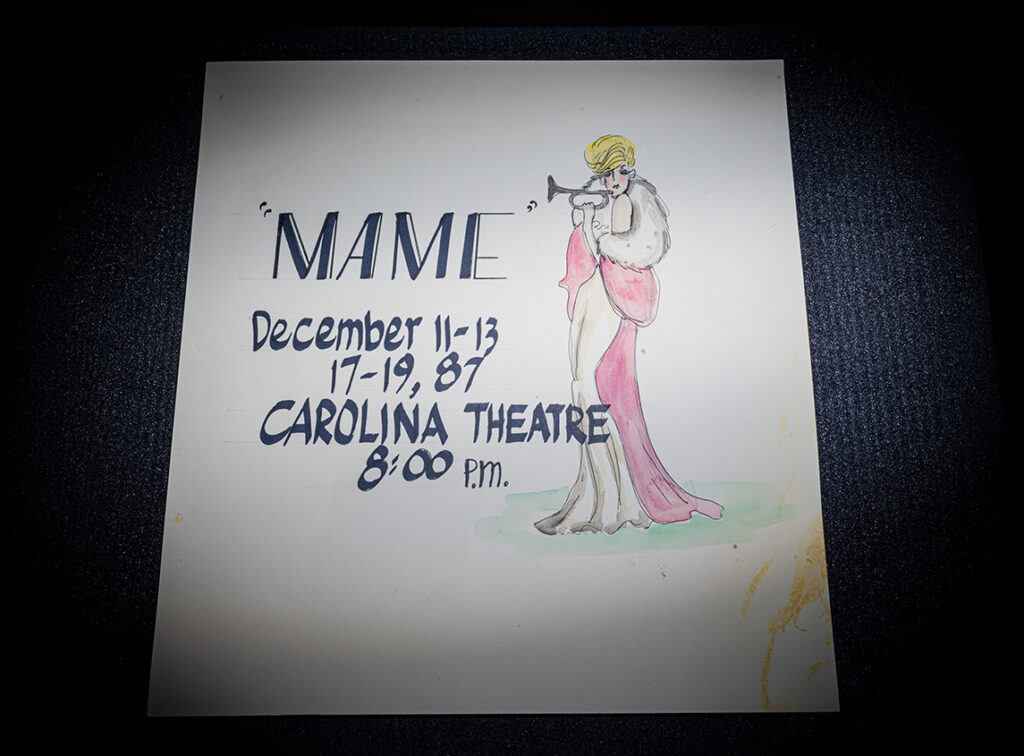
“Theatre has been, and continues to be, a major part of Greensboro and the Triad. The Livestock Playhouse has performed plays in Greensboro since 1972, when summer productions were started by Barbara Britton and Carole Lindsey-Potter. The Livestock moved its productions from the ‘barn’ at Town Hall to the Carolina Theatre in downtown Greensboro. This poster for a Livestock production of Mame is beautifully hand-drawn and forms part of a larger set designed for the theatre company. Britton donated her collection of Livestock Playhouse materials to UNCG, helping SCUA continue to bolster its theatre holdings, often used for class instruction and pop-up exhibits. The collection is particularly important in that it captures amateur children’s theatre and a major community institution in Greensboro for over 30 years.” – Patrick Dollar
1945 Army Special Services Librarian garrison cap
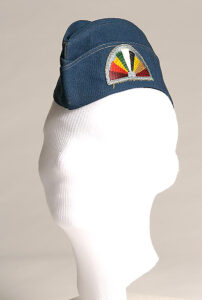
“As someone who loves a good hat as well as libraries, this WWII garrison or envelope hat sports the rainbow-colored patch identifying the Army Special Services librarian. It speaks to me!”
– Beth Ann Koelsch
Recording of “You Don’t Get it From Books” (original song with music and lyrics by Doris Funderburk)
“At a time when white women were discouraged from performing jazz music, the Darlinettes, an all-girl big band consisting of students from the Woman’s College, broke the rules. Founded in 1942, the group played school dances, USO shows in Greensboro, and other events around the state. After one campus performance, The Carolinian student newspaper wrote, ‘The Darlinettes could put out some hot jive and rugged boogie-woogie.’ While they primarily performed covers of popular tunes, they did feature some original songs. This one – “You Don’t Get It from Books” – was recorded as part of their 1946 album “Autumn Serenade.” The lyrics and music were written by Doris Funderburk, the second band leader for the Darlinettes.” – Erin Lawrimore
Textile History Paper Doll Barbie by Irene Chan
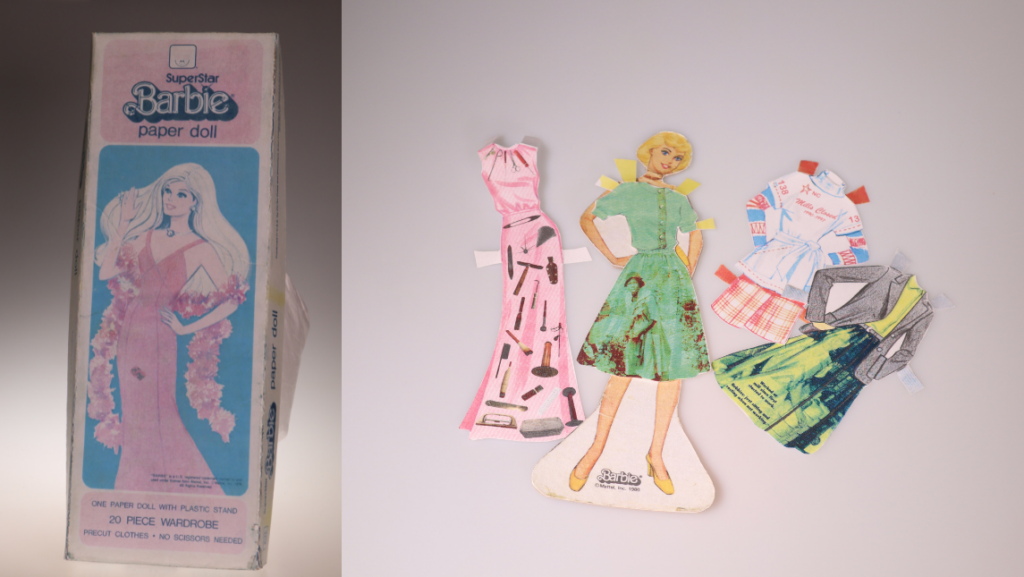
“Irene Chan was a resident artist at Elsewhere Museum in Greensboro in 2007. During her residency, she created Textile History Paper Doll Barbie. She used it as a tool to tell the story of North Carolina textile workers by printing information about their experiences on the paper clothes.” – Suzanne Sawyer
“Incidents in the Life of a Slave Girl “
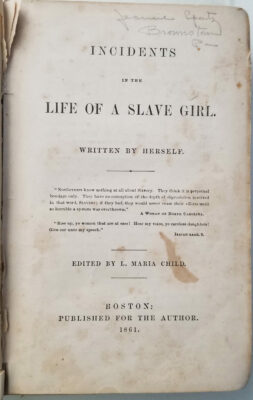
“Incidents in the Life of a Slave Girl, written by Harriet Jacobs under the pseudonym Linda Brent, takes the reader into the realities of an enslaved woman’s life. The story behind the creation of this work, all her attempts to have either – or both – British and American abolitionists support the financial and intellectual efforts to publish this book, is a tale unto itself. In the end, Lydia Maria Child served as the editor, but Harriet Jacobs had to buy the stereotyped plates to arrange the publishing of her book herself. All the while, Mrs. Jacobs worried about the shame she might be subjected to by society once society learned of the sexual abuse she suffered at the hands of her former enslaver. What she found was support. I have the greatest respect for Mrs. Jacobs’ strength and survival.” – Carolyn Shankle
WWI Diary and Documents of Elsie T. Spear
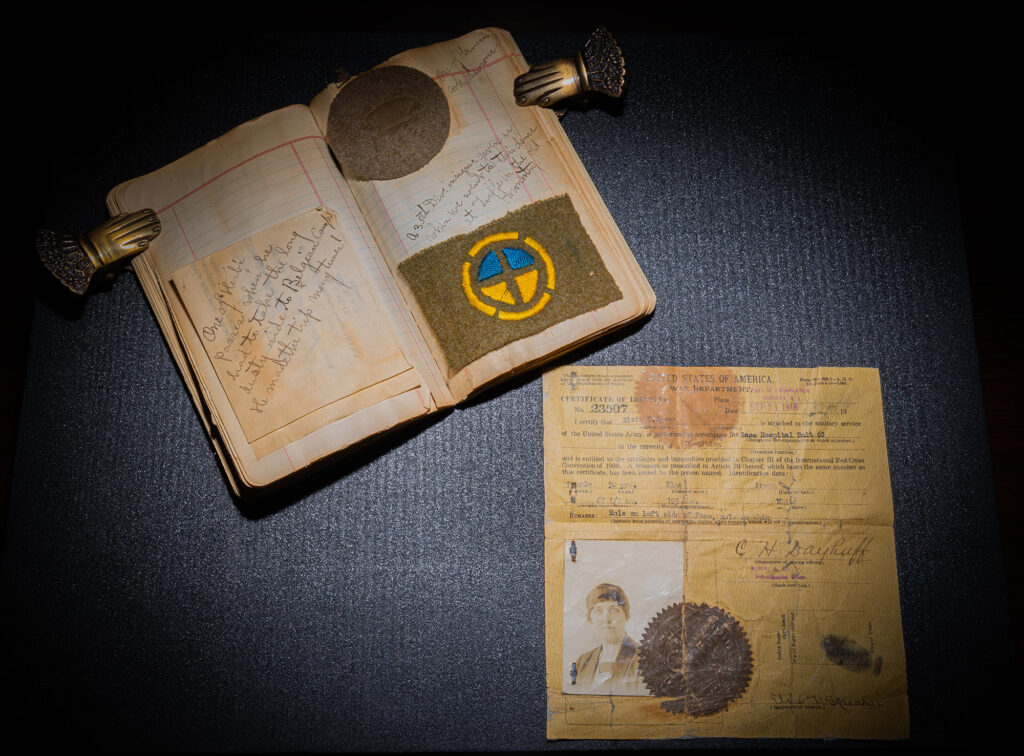
“Every time I receive an item from the Women Veterans Curator, Beth Ann Koelsch, that needs treatment, I am reminded how amazing it is that we have such an amazing and vast collection of materials that provide such insight and information regarding women in the military. I recently treated, mended, and constructed a custom enclosure to house the Diary of Elsie T. Spears. There were documents along with the diary, amongst which was her Certificate of Identity. This folded document which shows her photo, her fingerprint and a seal of the military survived 102 years, mostly intact, from World War I. A time so long ago that few here on earth can remember. I am grateful for her and so many others’ service in the military.” – Audrey Sage
“A Biographical History of England, from Egbert the Great to the Revolution,” James Granger, Edgar Howard Boles, W. Nicholson, and W. Baynes
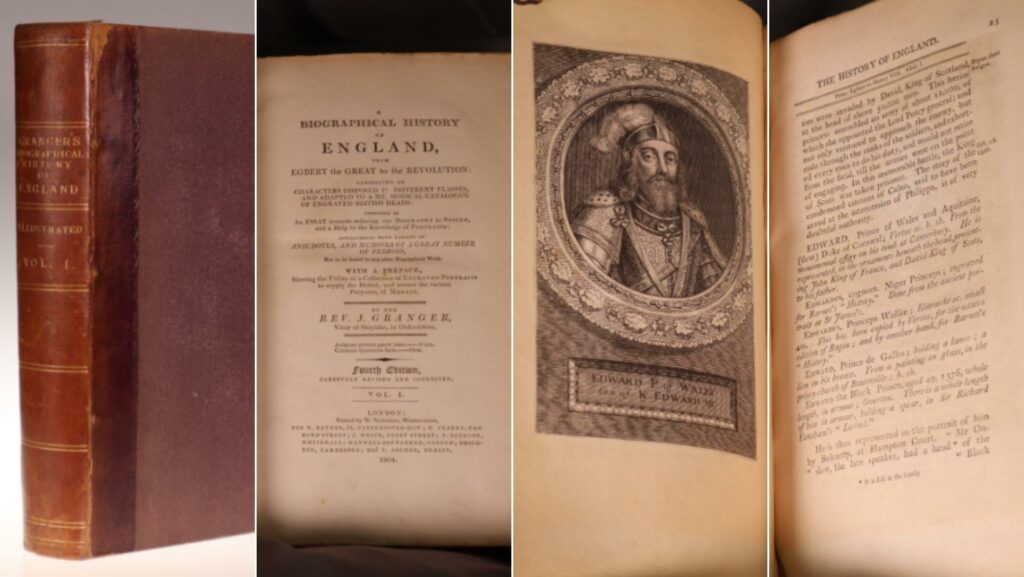
“Extra-illustration, or ‘Grangerising’ is the term used to describe customization of printed texts by adding illustrations that are thematically linked to the texts but not part of the original publication. The term ‘Grangerising’ derived from James Granger, whose multi-volume work, Biographical History of England from Egbert the Great to the Revolution – the same title you see here – was originally published without illustration. One can imagine the thrill for the previous owners as they found, and added, images to this copy. Our copy has passed through at least three hands, but the addition of images seems to belong to the first owner, Robert W. Downing. We love to show our Grangerised Granger to students!” –Carolyn Shankle
Set design for “The Merchant of Venice”
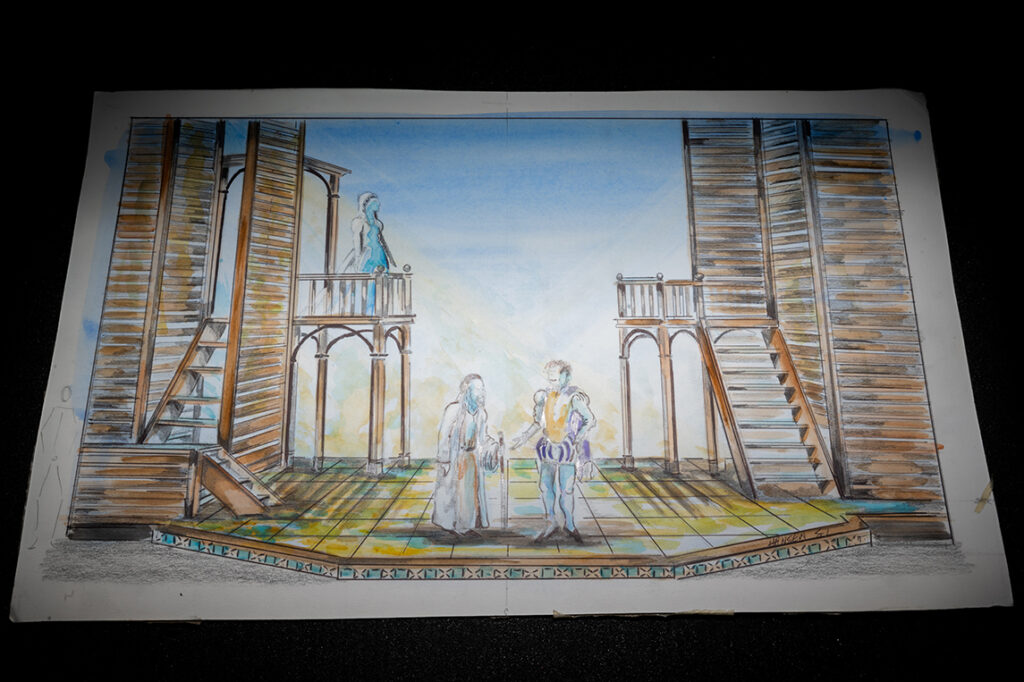
“Dr. Robert C. Hansen is a Professor Emeritus in the School of Theatre. Dr. Hansen has donated over 100 linear feet of materials, including posters, programs/playbills, autographs, correspondence, play scripts, music scores, and much more. I selected scene design because it was part of a set of set/costume designs created personally by Dr. Hansen. Illustrating his considerable skill as a designer, this striking scene from The Merchant of Venice was created in 1982 at Bowling Green State University. We use materials like this frequently in our instructional sessions, particularly with theatre and English classes, to help students see the creative process behind plays and to illustrate the differences between productions of a particular play.” – Patrick Dollar
Horae beatae Mariae Virginis : Saec. XVI. (1500-1515)
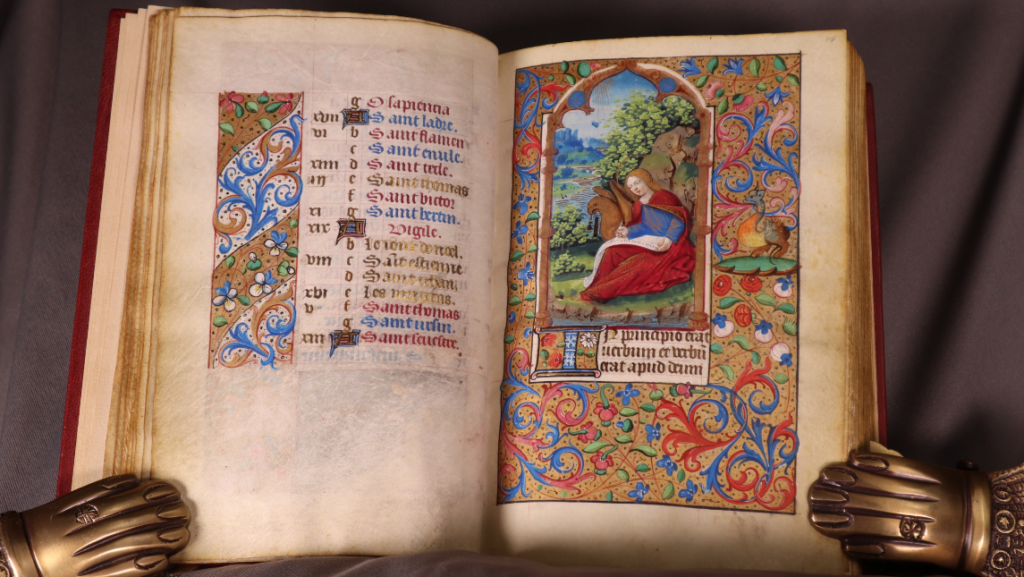
“Aside from being a lovely example of an illuminated manuscript, this book is also a great example of book conservation. It was rebound in 1985 by Fritz Eberhardt and is now boxed with parts of the 19th century cover and clasps used to keep it closed. The conservator who rebound it preserved part of the history of the binding along with the content of the book.” – Suzanne Sawyer
“Horror House” by Carolyn Wells, 1st edition, 1931
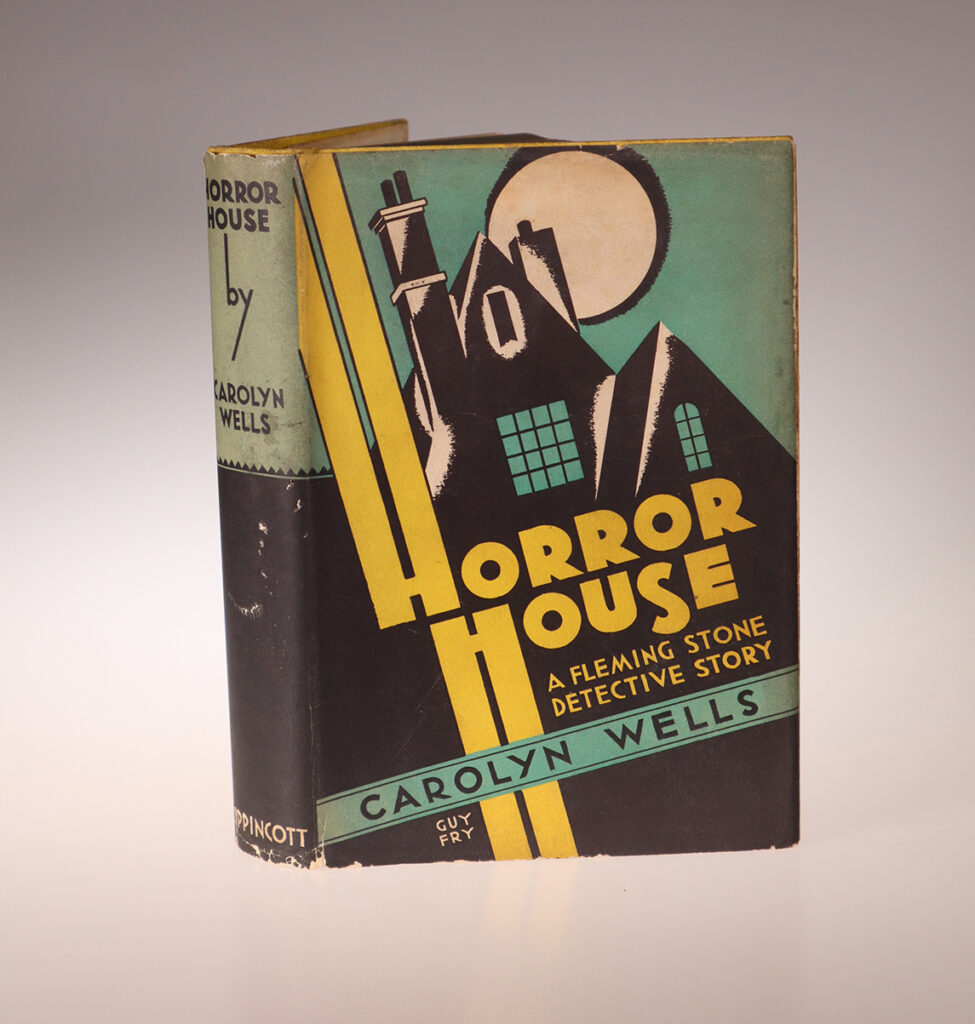
“Carolyn Wells proved a prolific writer with over 170 works to her name. It was after hearing Anna Katharine Green’s (who is known as the Mother of American Detective Fiction) mystery novel, That Affair Next Door (1897), read aloud that she was captivated by the lure of unraveling a puzzle. Wells threw herself into the mystery genre, creating one of the iconic detectives, Fleming Stone. Our copy of Horror House, a mystery where members of a family are picked off one by one, is in its original dust jacket, designed by Guy Fry. Known for his use of vibrant color and discordant perspective, Fry’s cover draws me in. What horrors live in this house? Will Stone find the killer before all are lost?”
– Carolyn Shankle
Notebook of Michael Parker’s short story drafts
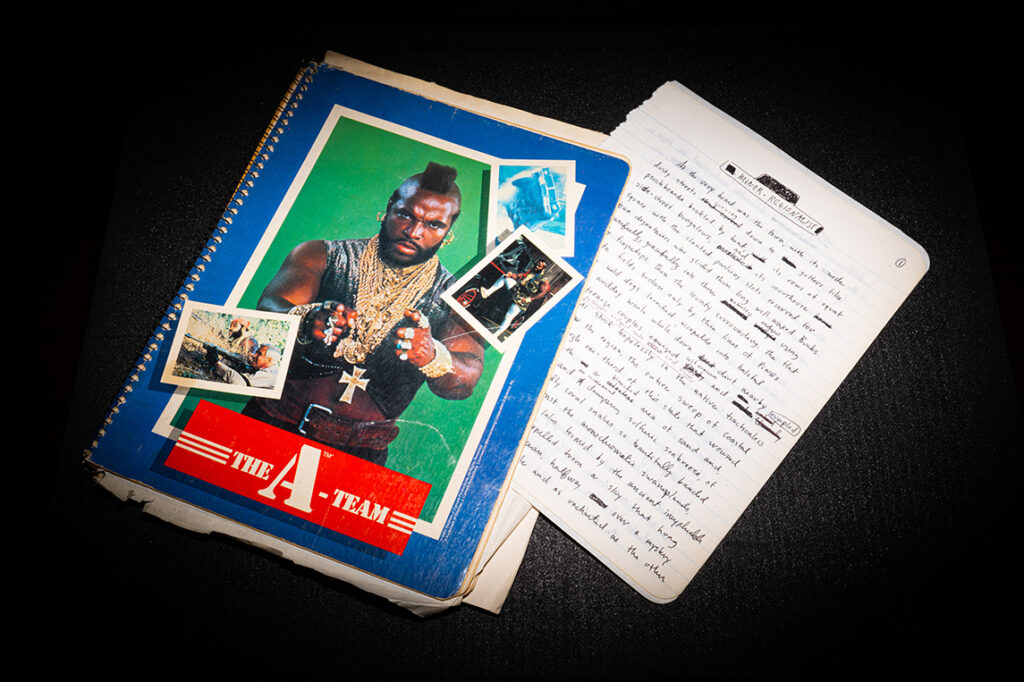
“One of SCUA’s strongest collection areas is creative writing. Joining our ranks of other illustrious authors, we acquired the personal papers of Michael Parker, novelist and retired UNCG creative writing professor. We use Michael’s collection extensively in both creative writing and English classes as a way to show an author’s creative process and, most often, to illustrate the revision process to students who are striving to write something “perfectly” the first time. I selected one of Michael’s notebooks containing short story drafts because it shows this creative and revision process. There are several other borrowed notebooks, including ones featuring Mr. T and video game characters.” – Patrick Dollar
World War I officer’s diary
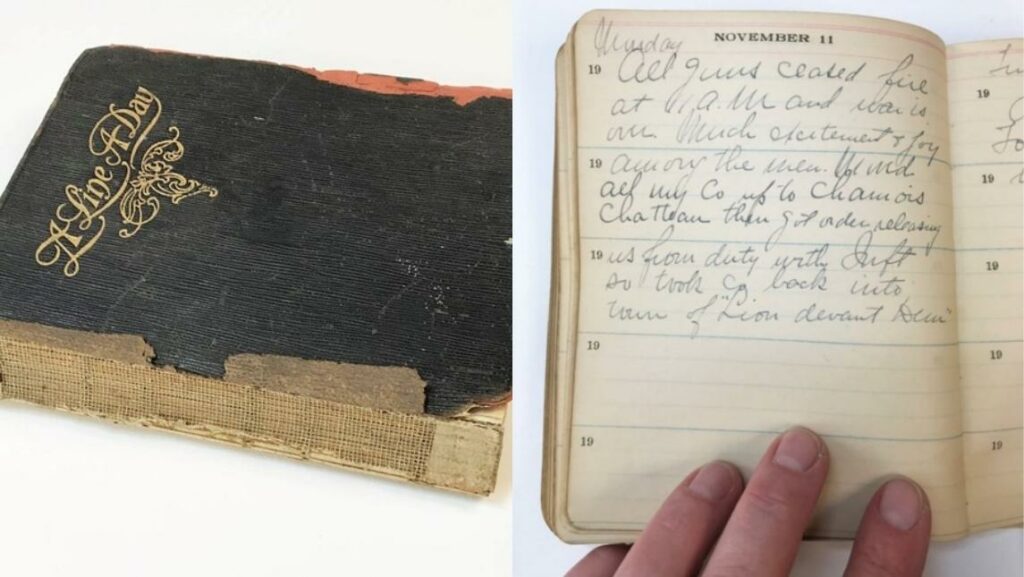
“This diary of an unknown WWI officer traces his experiences from April 1918 to April 1919. Of particular interest, the author recorded the events of November 11, 1918, the day a ceasefire was declared, and World War I ended. It provides an opportunity for students and other researchers to read a first-person account of the Great War, as it has become known.” – Suzanne Sawyer
Martha Blakeney Hodges Special Collections and University Archives (SCUA) 50th Anniversary Speaker Series
July 1: “A closer look at the ‘Anno tricesimo tertio Henrici octavi” with Kathelene Smith and Stacey Krim
July 15: “Blackwinging it in the Digital Age” with Author Michael Parker
Aug. 5: Well Crafted NC: Documenting the History of Beer and Brewing in North Carolina” with Erin Lawrimore
Aug. 18: “A Chat with Author and Educator Lee Zacharias”
Sept. 2: “Student Workers in the Archives” with Patrick Dollar and Student Workers
Sept. 6: “A Conversation with Author and Poet Lenard Moore,” co-sponsored by North Carolina Literary Map
Sept. 16: “Confessions of a Collector: The Robert C. Hansen Performing Arts Collection” with School of Theatre Professor Emeritus Dr. Robert Hansen
Oct. 6: “Locating ‘Jack the Ripper’ in Archives” with Director of Graduate Studies and History Professor Dr. Jill Bender
Oct. 7: “Pride of the Community: Documenting the Triad’s LGBTQ History” with David Gwynn and Stacey Krim
Oct. 20: “Signs of the Past: Campus Ghosts at UNCG” with Special Collections Specialist Carolyn Shankle
Nov. 4: “She Can, We Can” Project” with Beth Ann Koelsch
Nov. 11: Annual Women Veterans Luncheon
Nov. 18: “Read My Lips: Political Collections in the Archives” with Special Collections Archivist Patrick Dollar
Dec. 2: “Holiday Recipes from SCUA Collections” with Patrick Dollar and Carolyn Shankle
Dec. 13: “Charles Dickens and his Christmas Ghost Stories” with Special Collections Interim Head and Instruction and Outreach Archivist Kathelene McCarty Smith
All sessions will be held virtually at noon. See the schedule and access links here.
“First Fridays” virtual conversations with SCUA archivists will be held at noon. See the schedule and access links here.
Want to stay up-to-date on SCUA collections and events? Subscribe to their newsletter and view past issues here.
Story by Alexandra McQueen, University Communications
Photos courtesy of SCUA staff and by David Row and Martin W. Kane, University Communications
